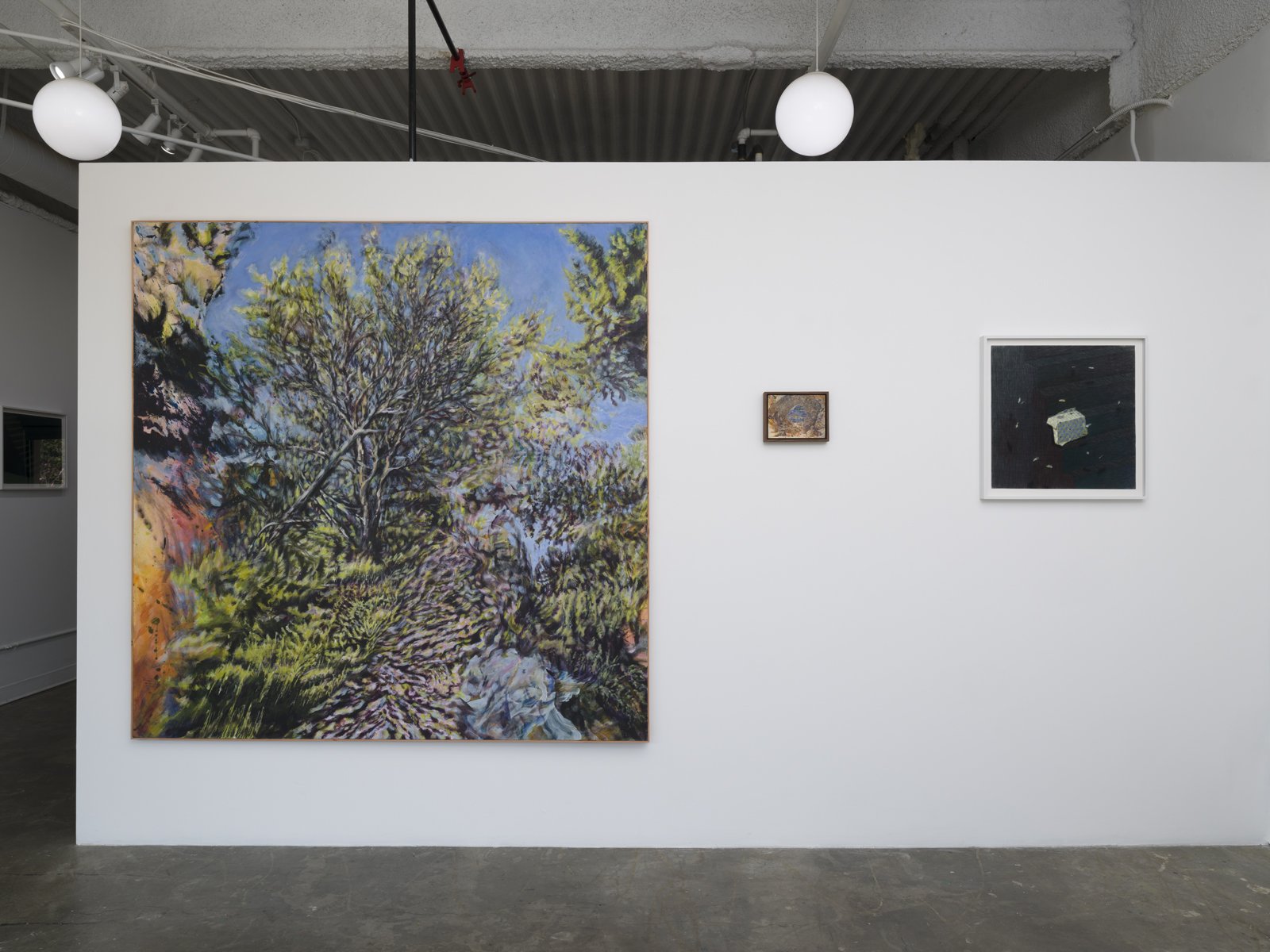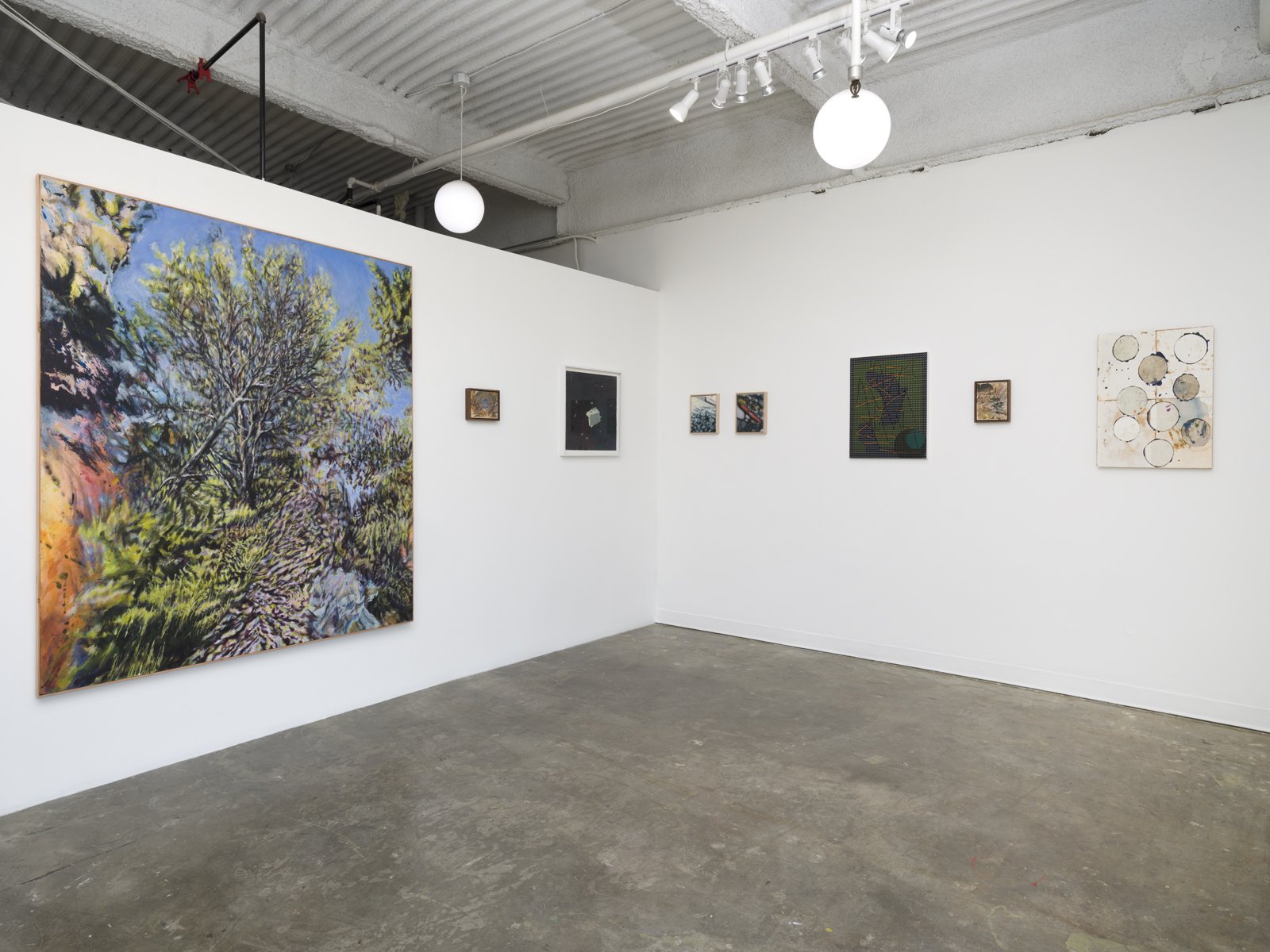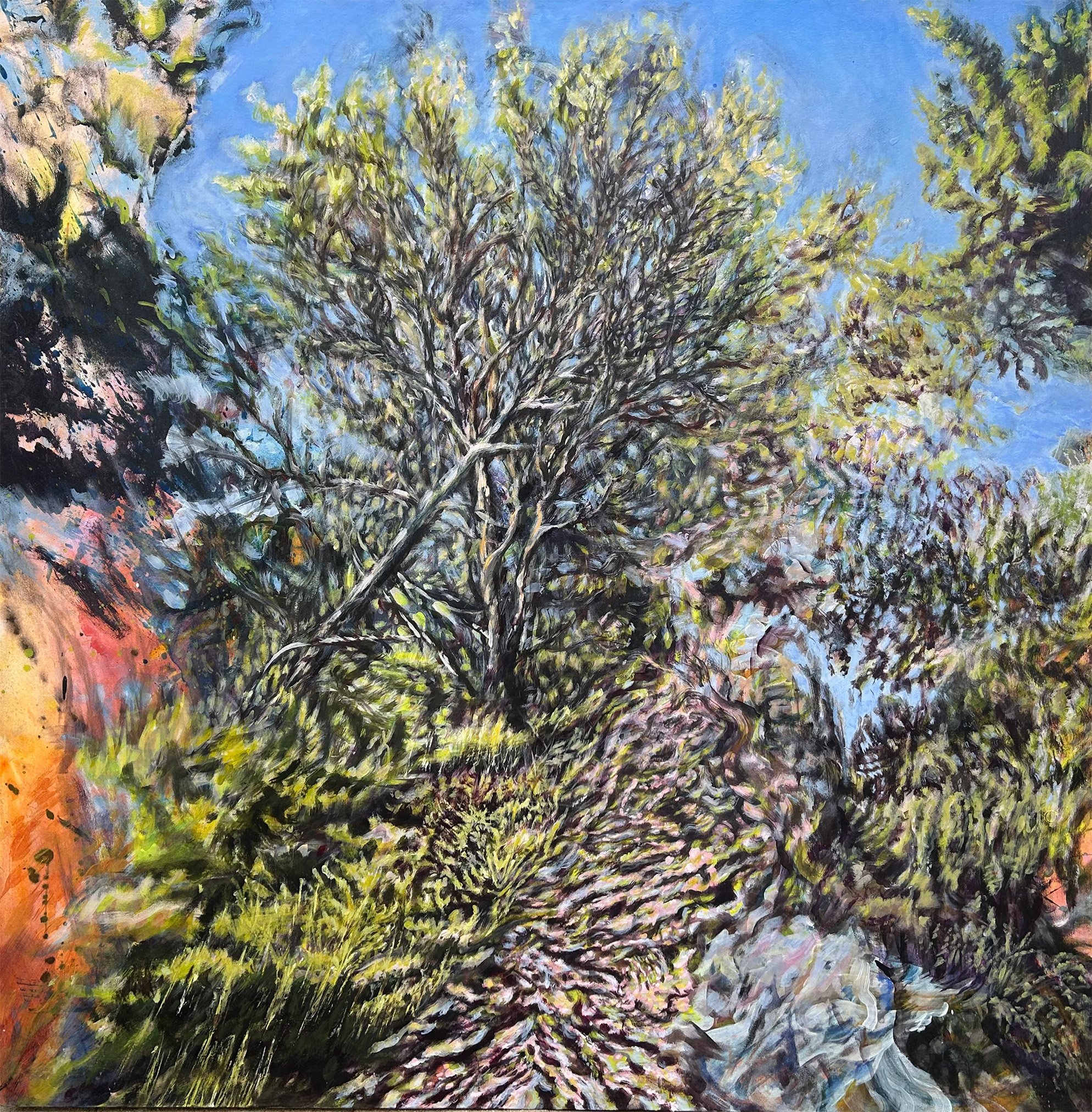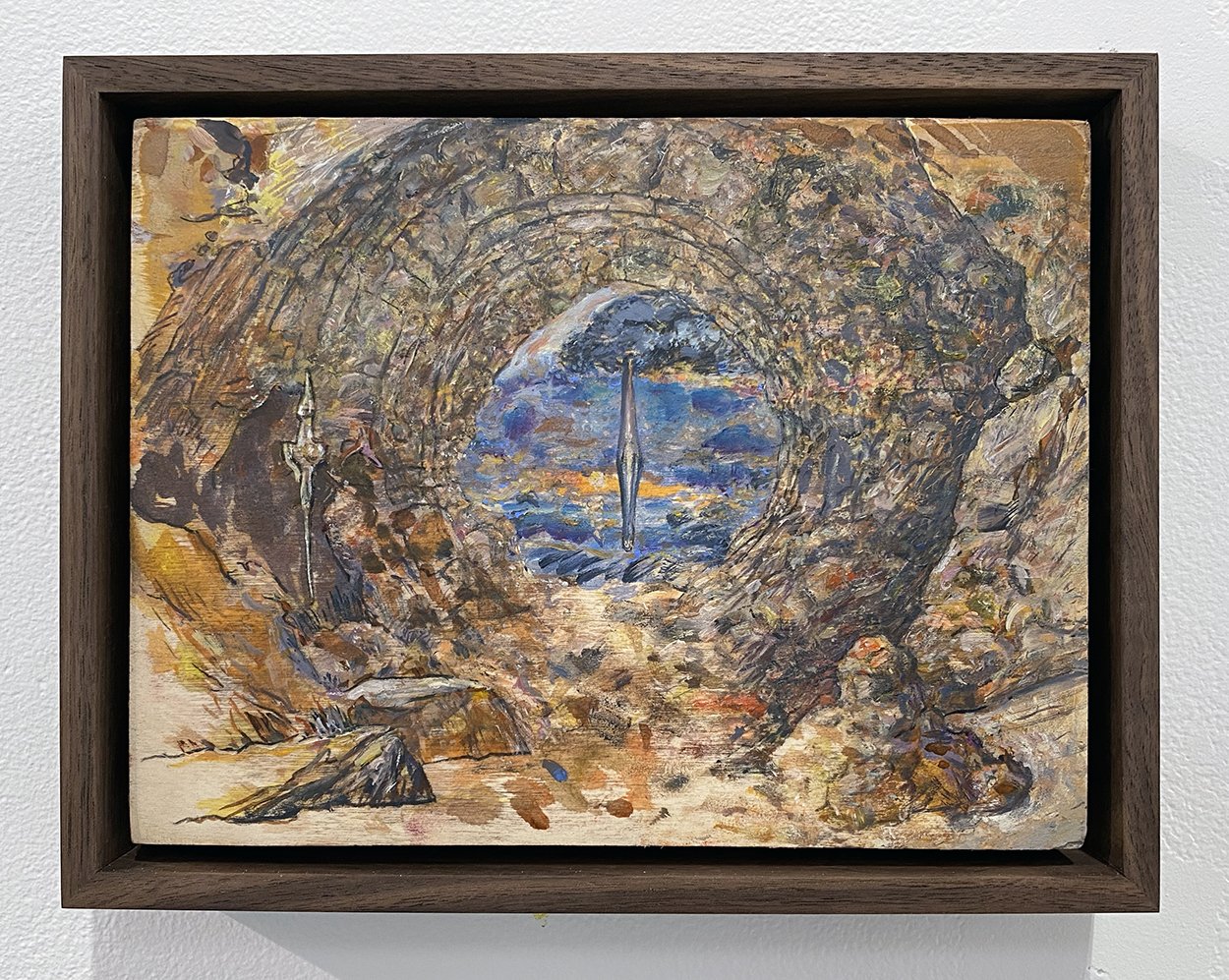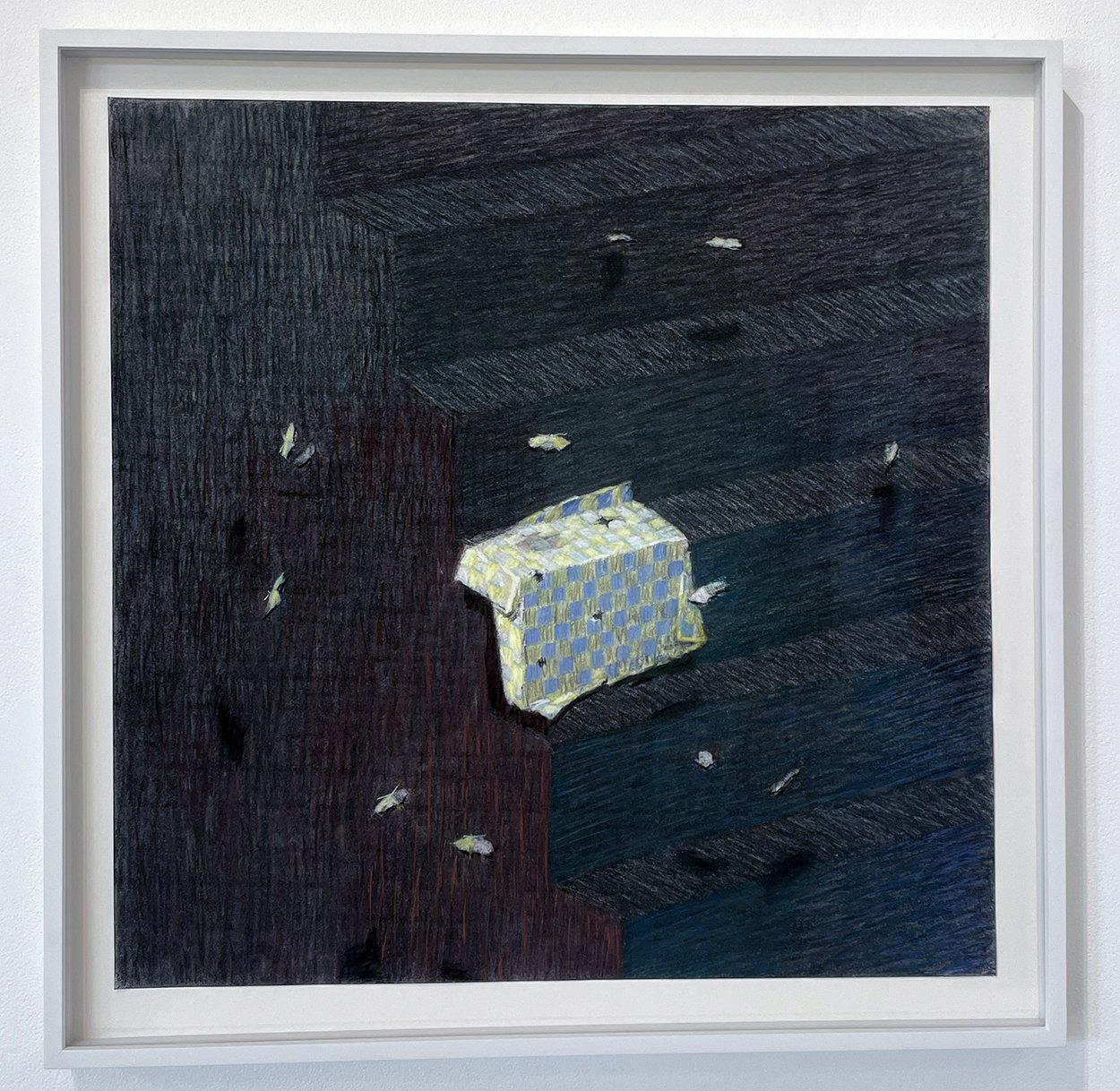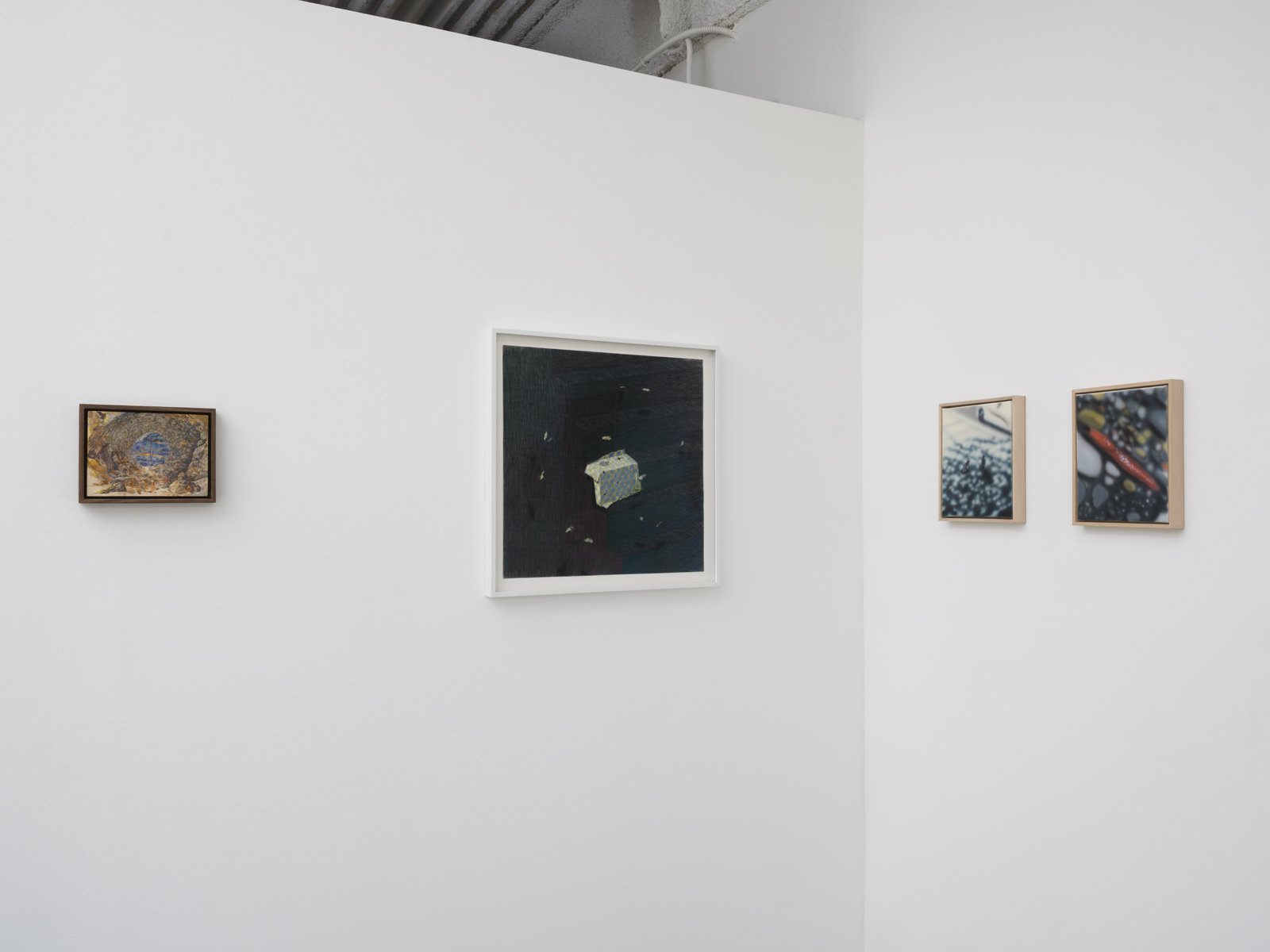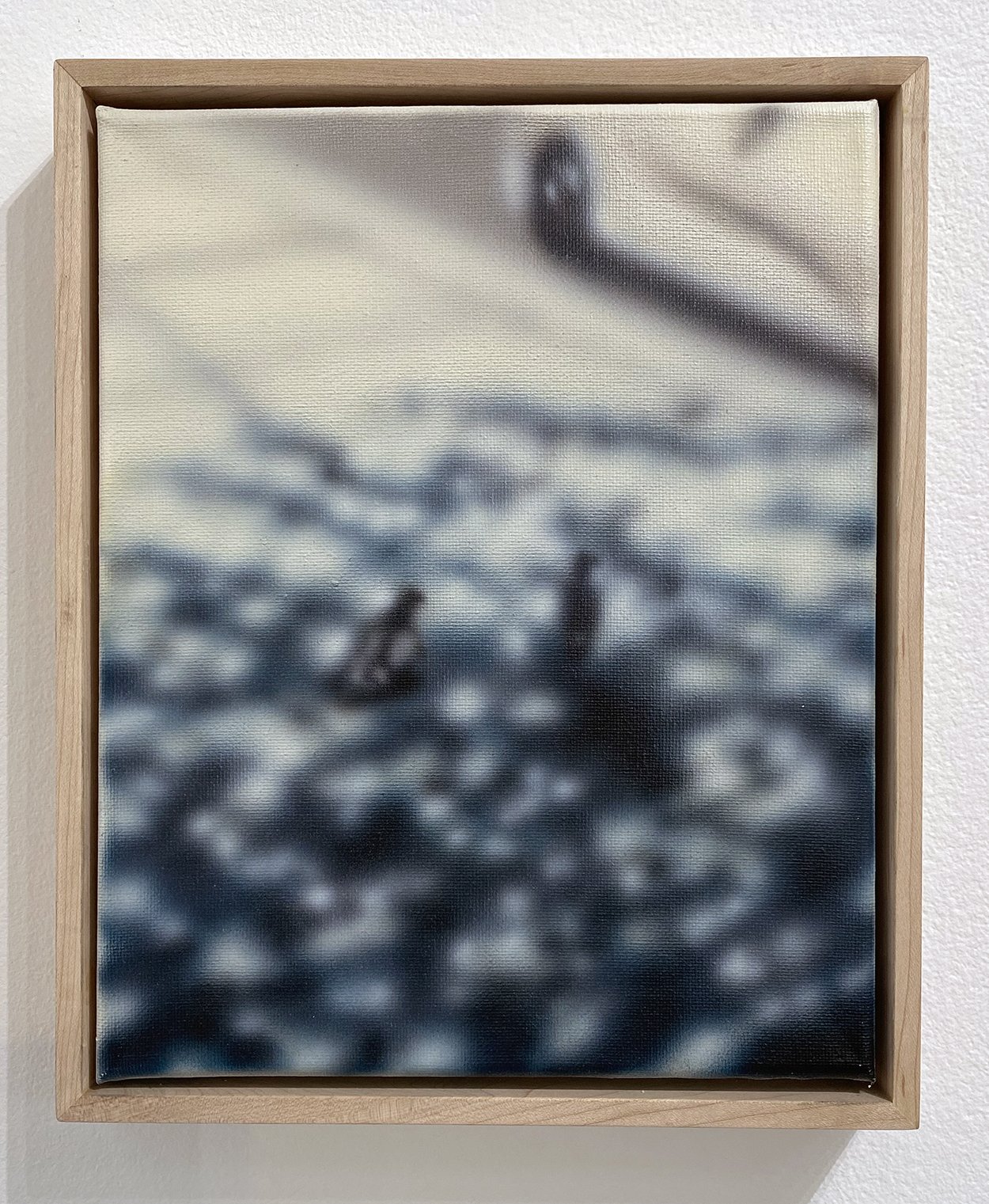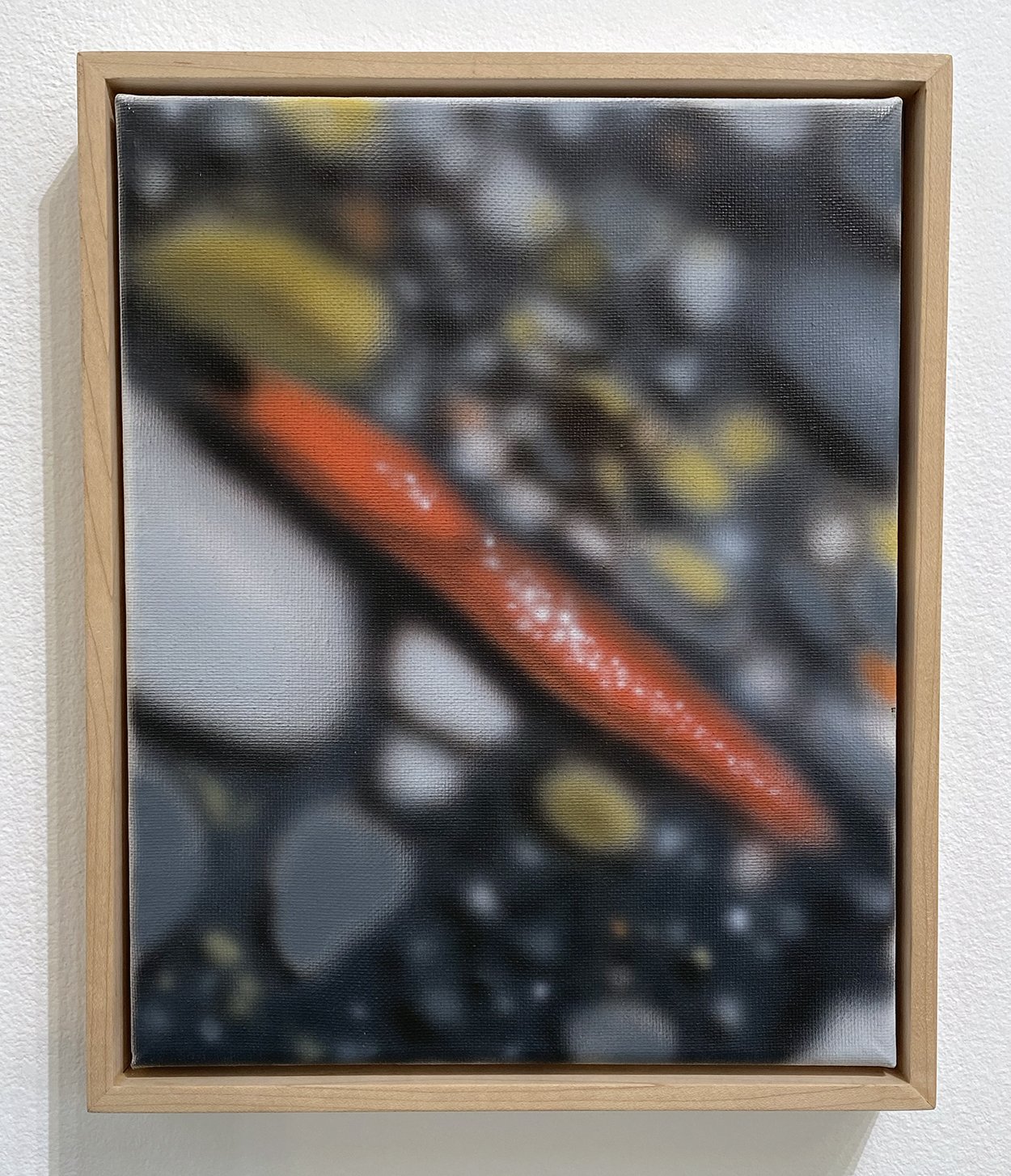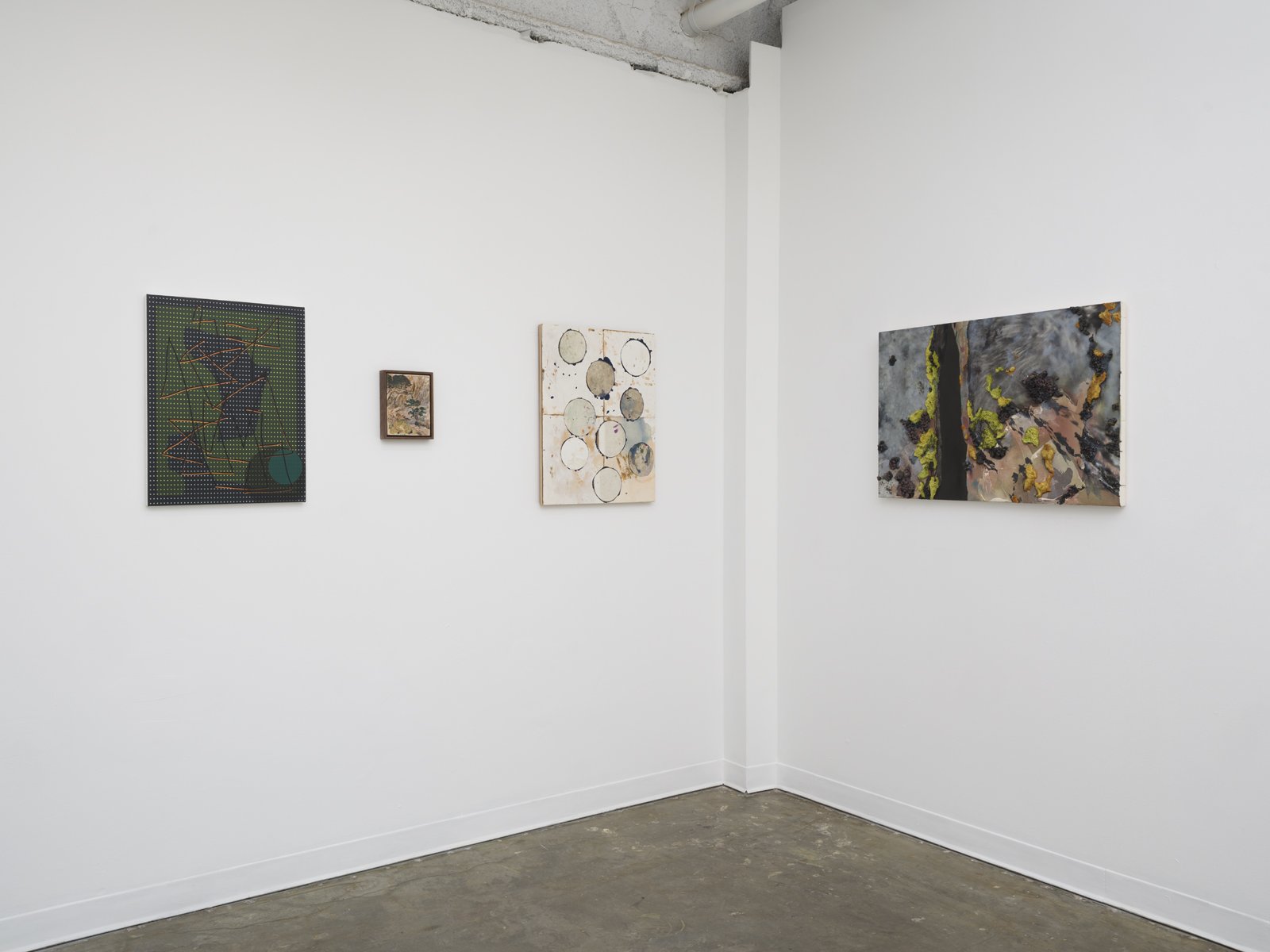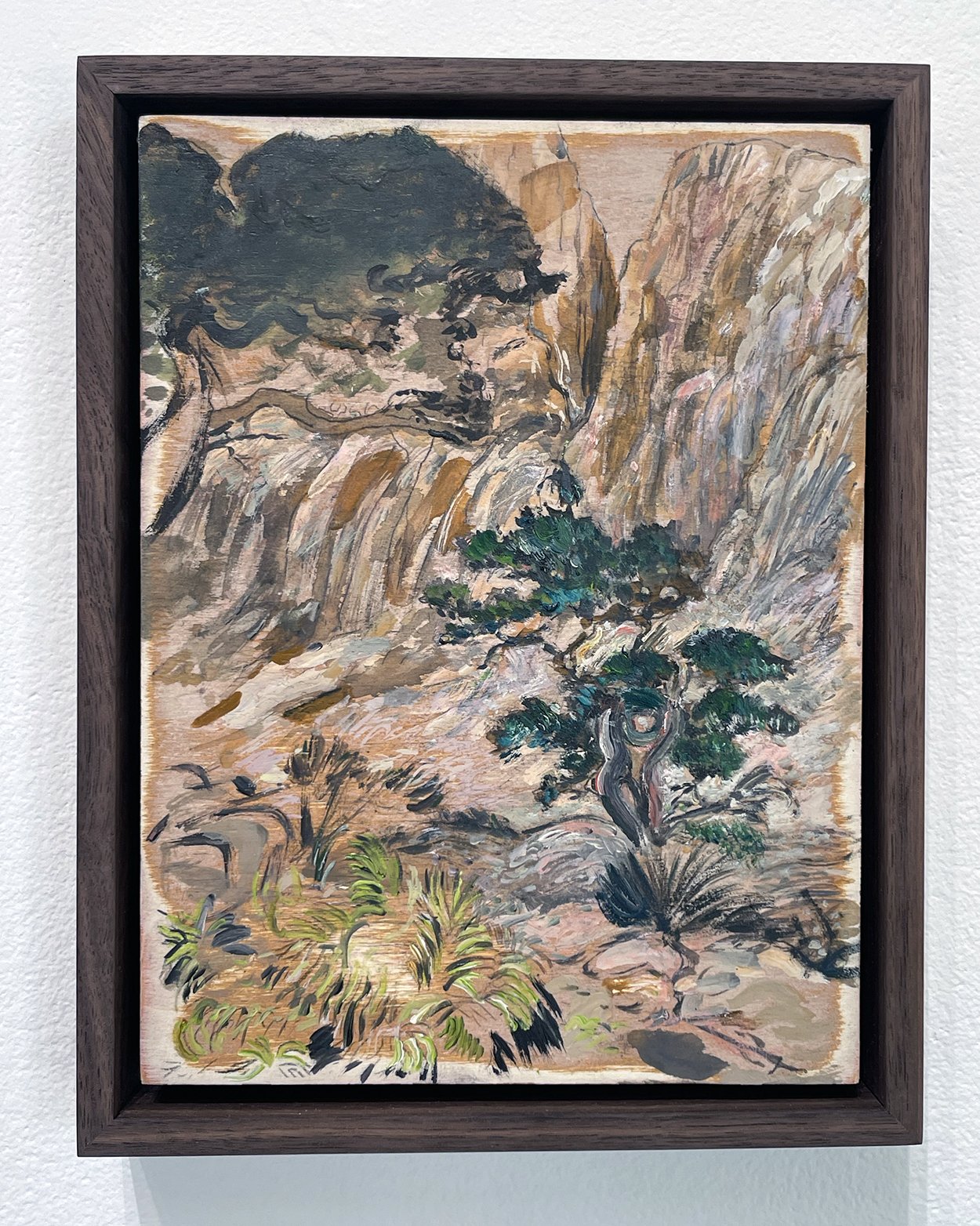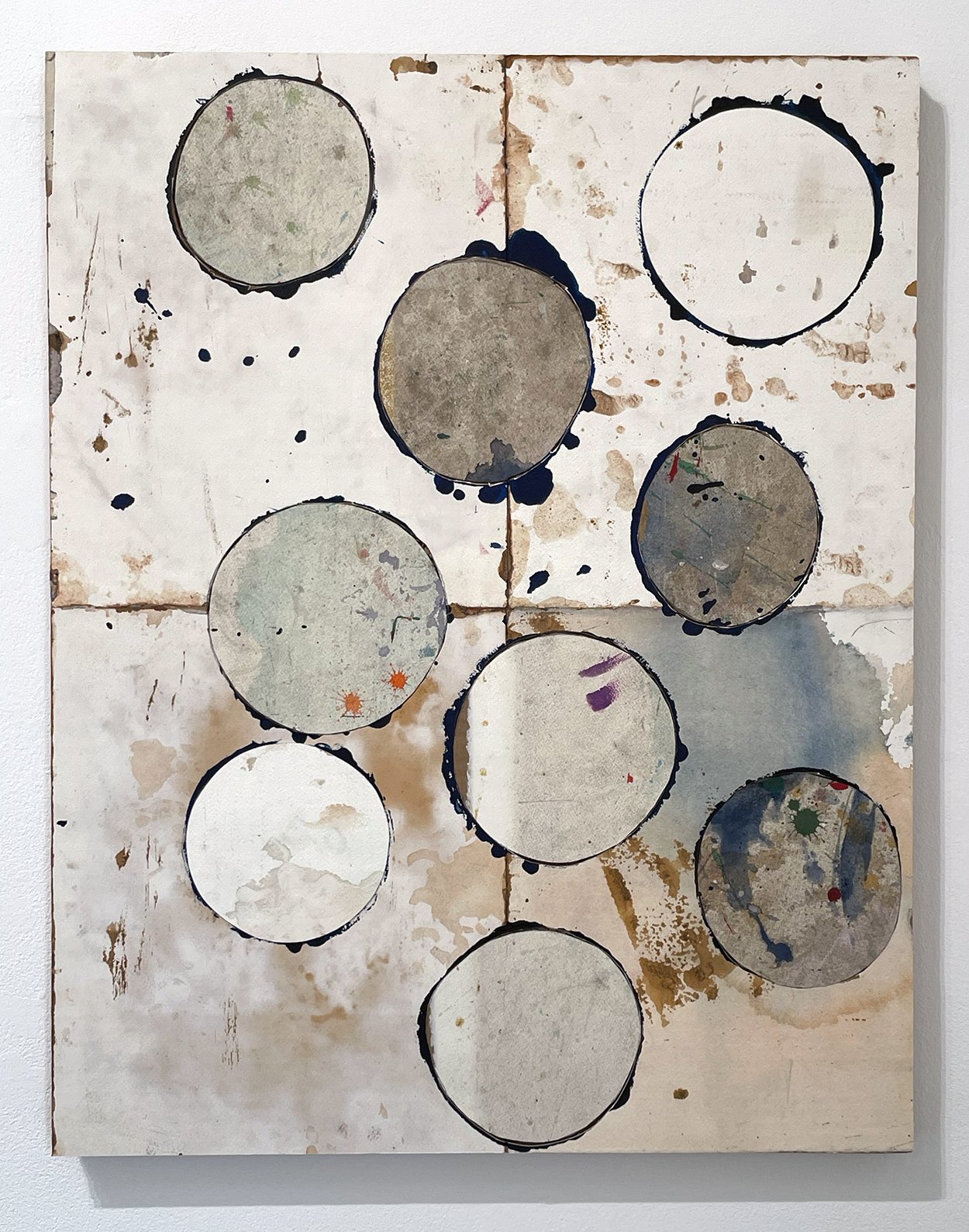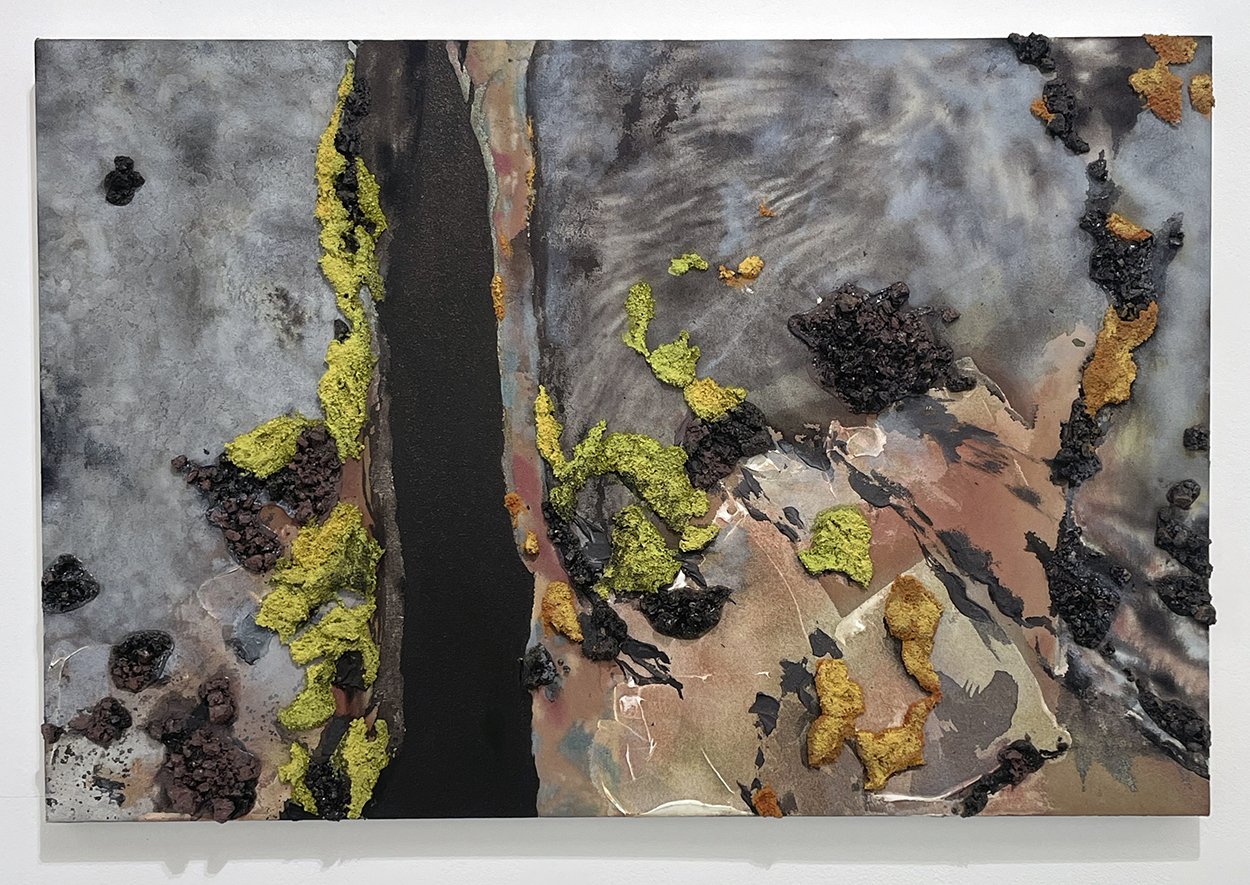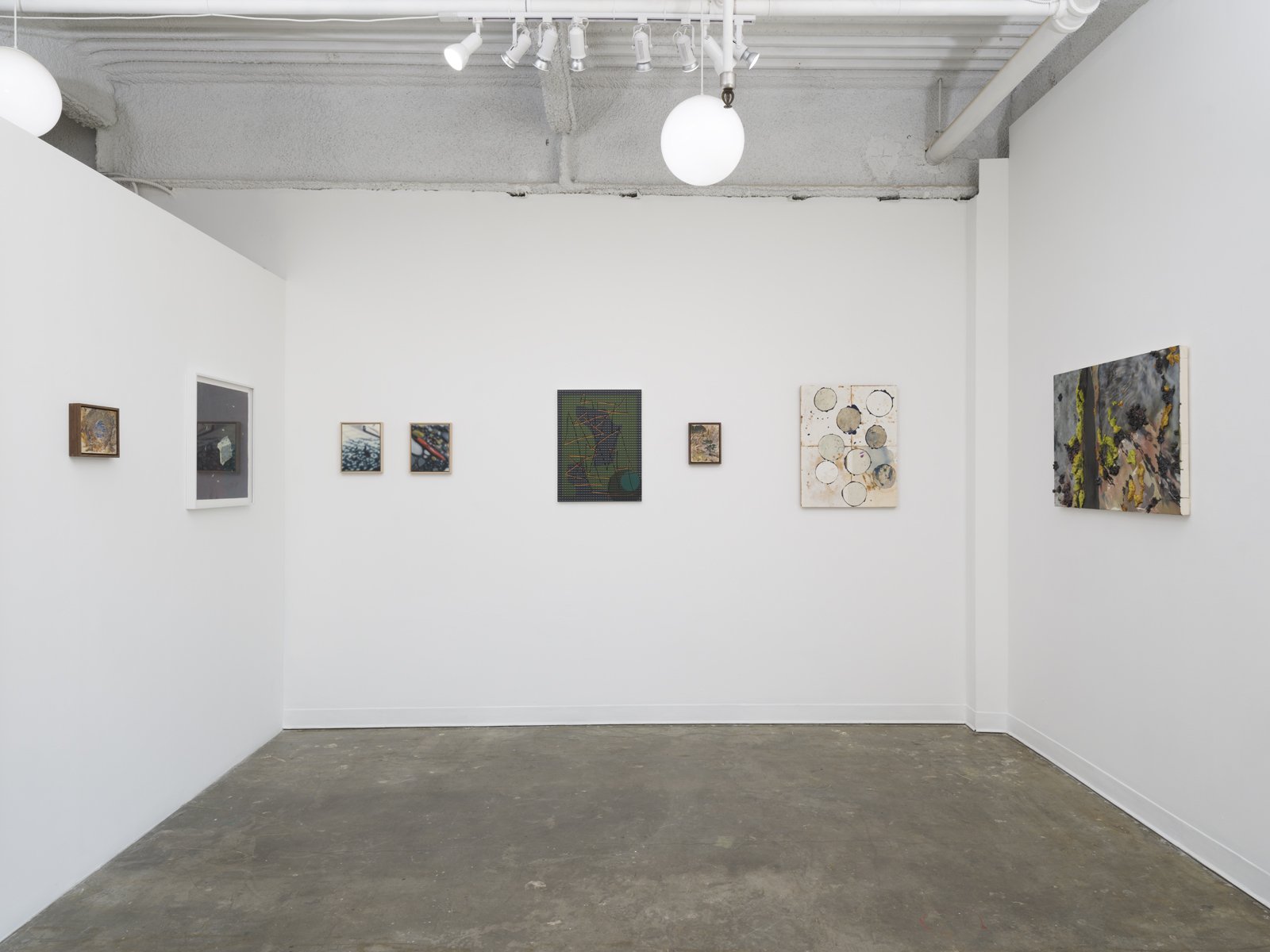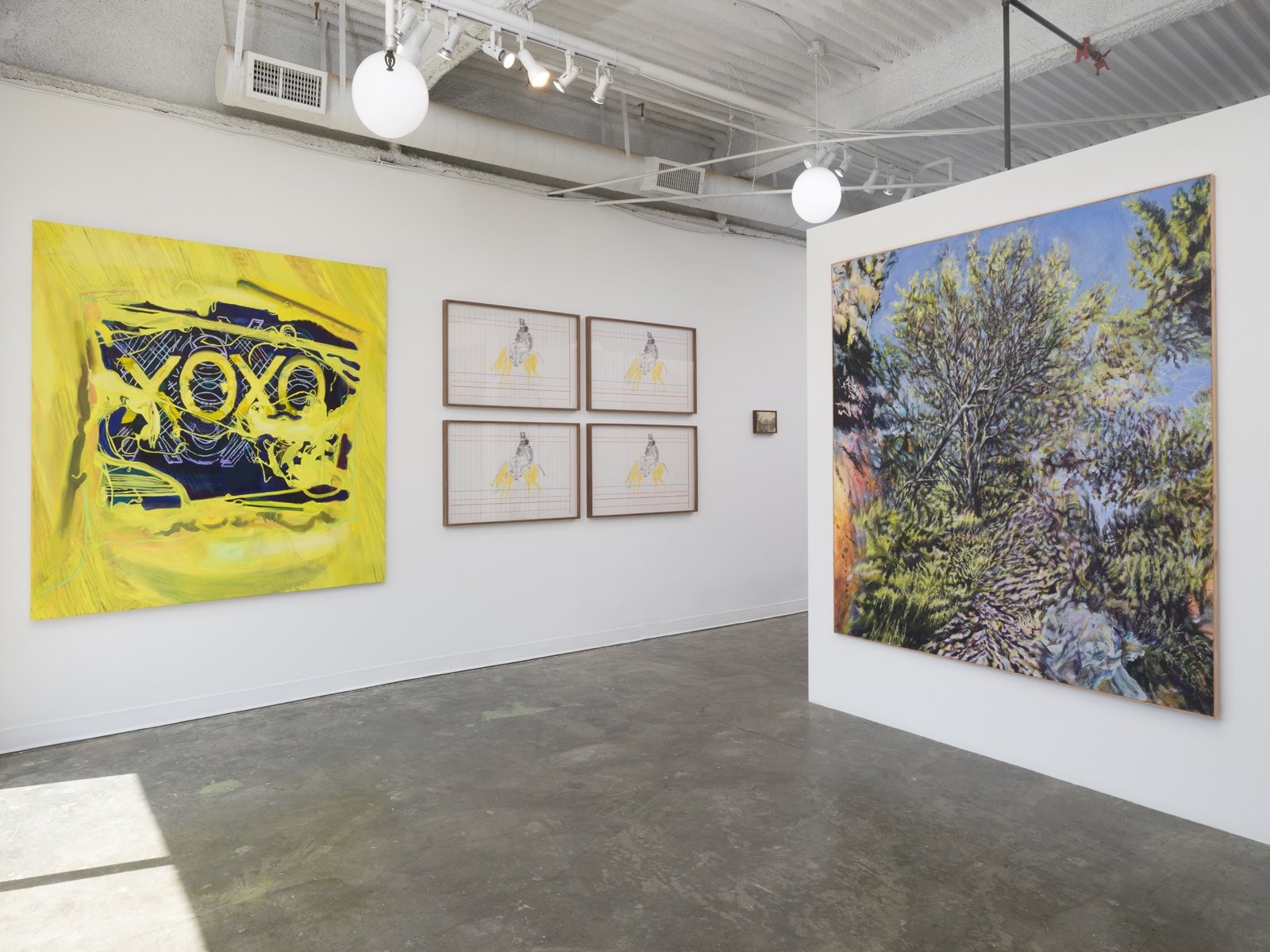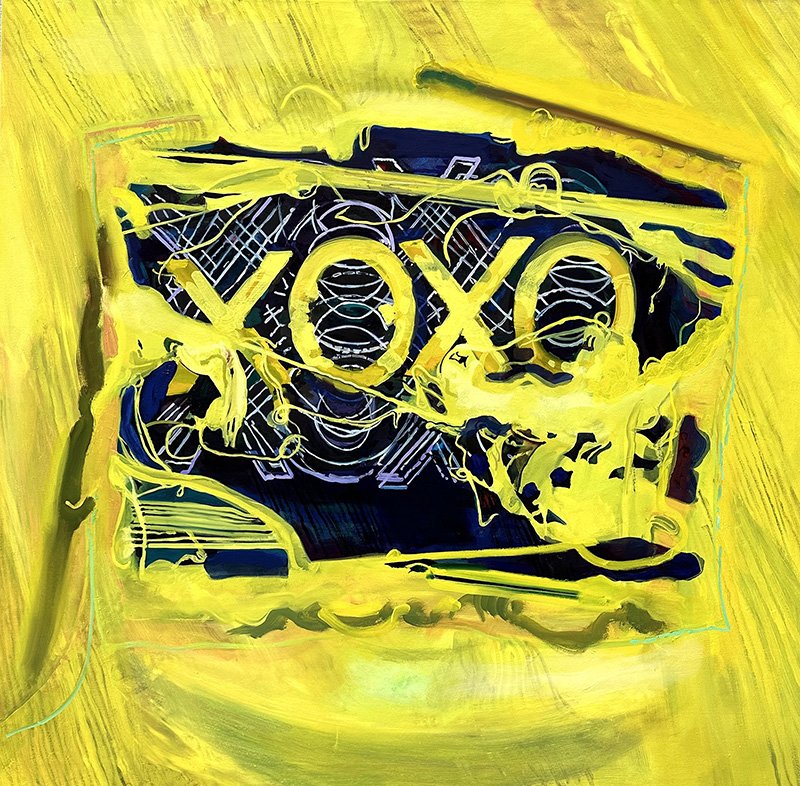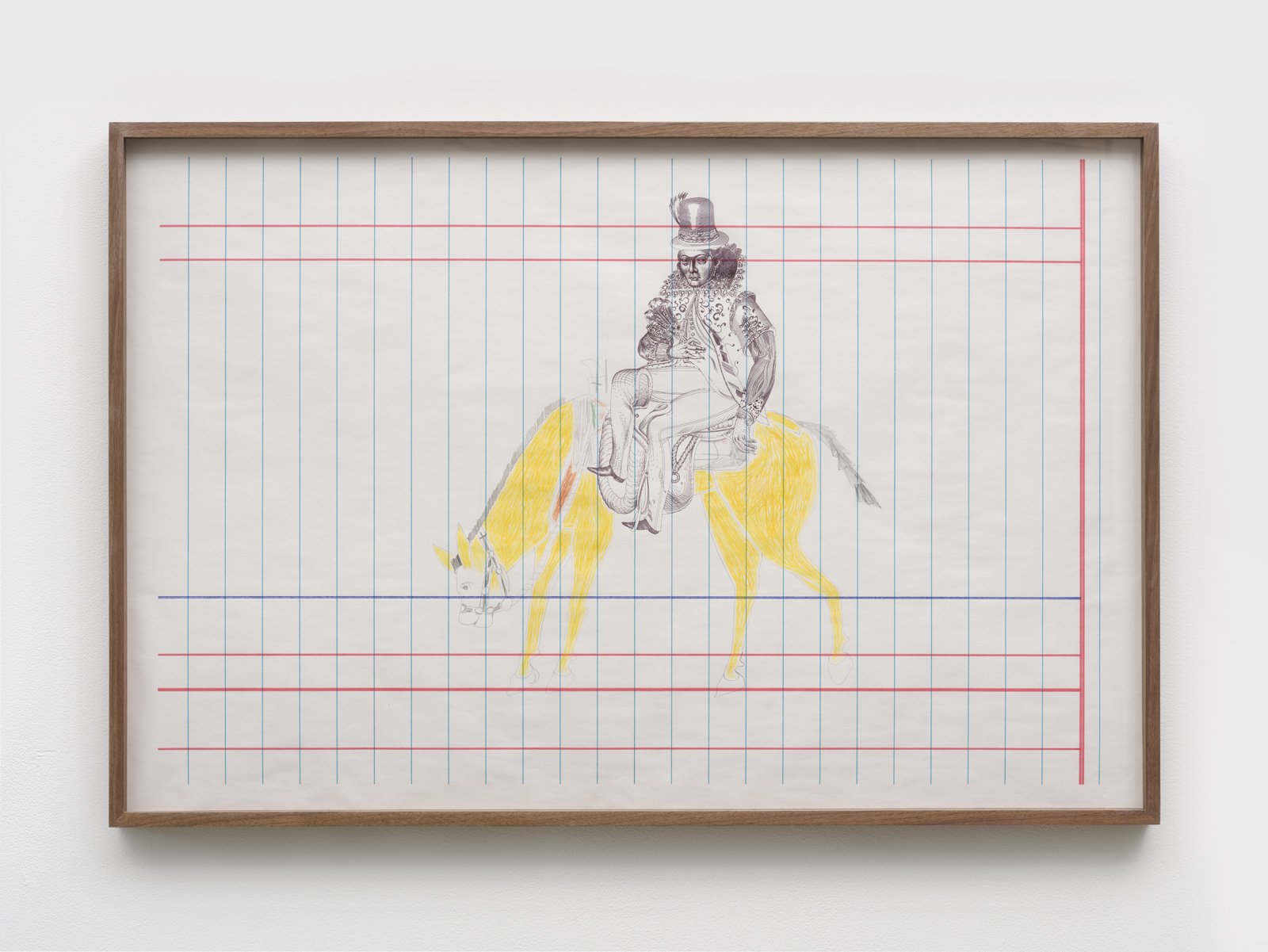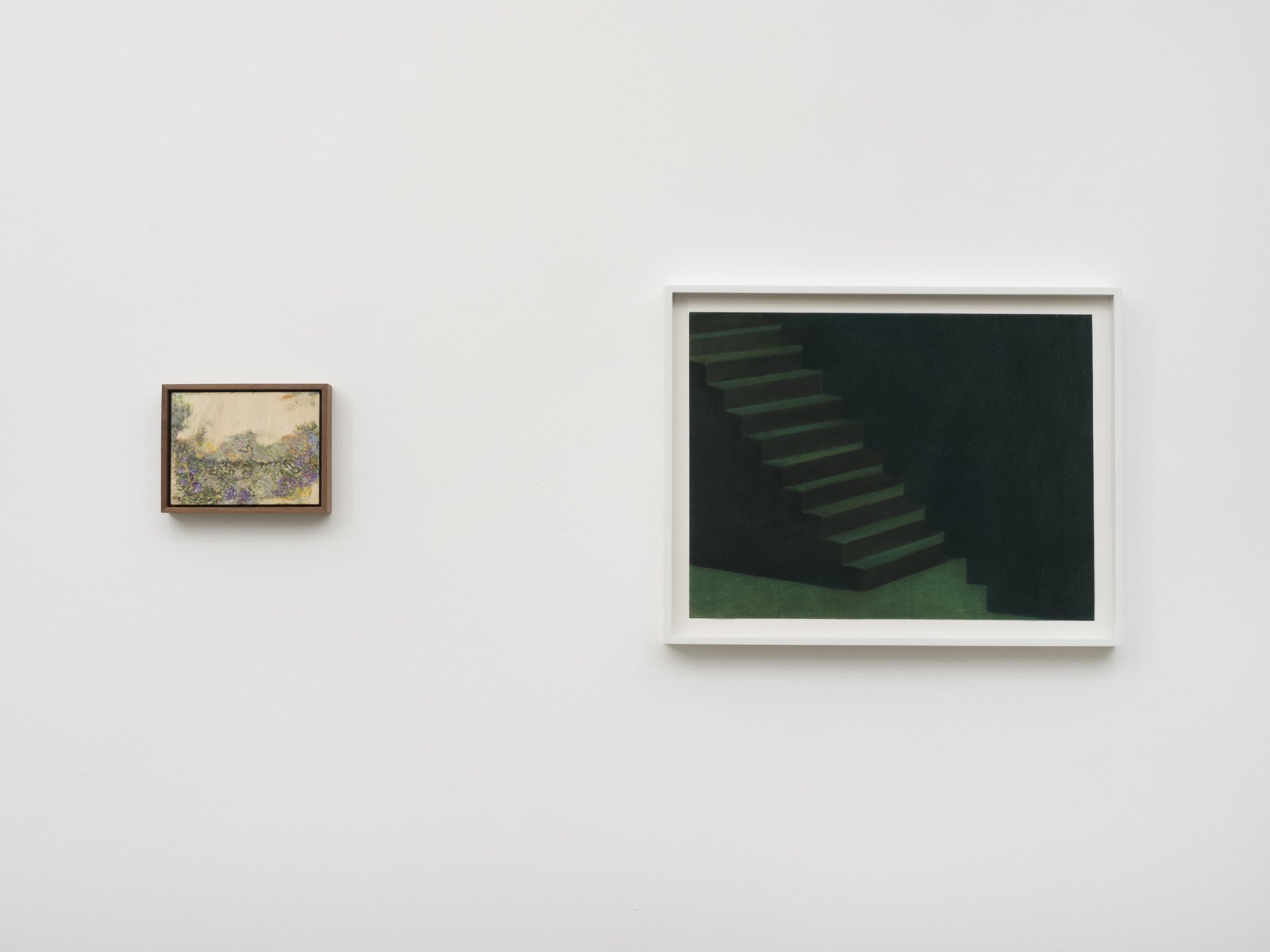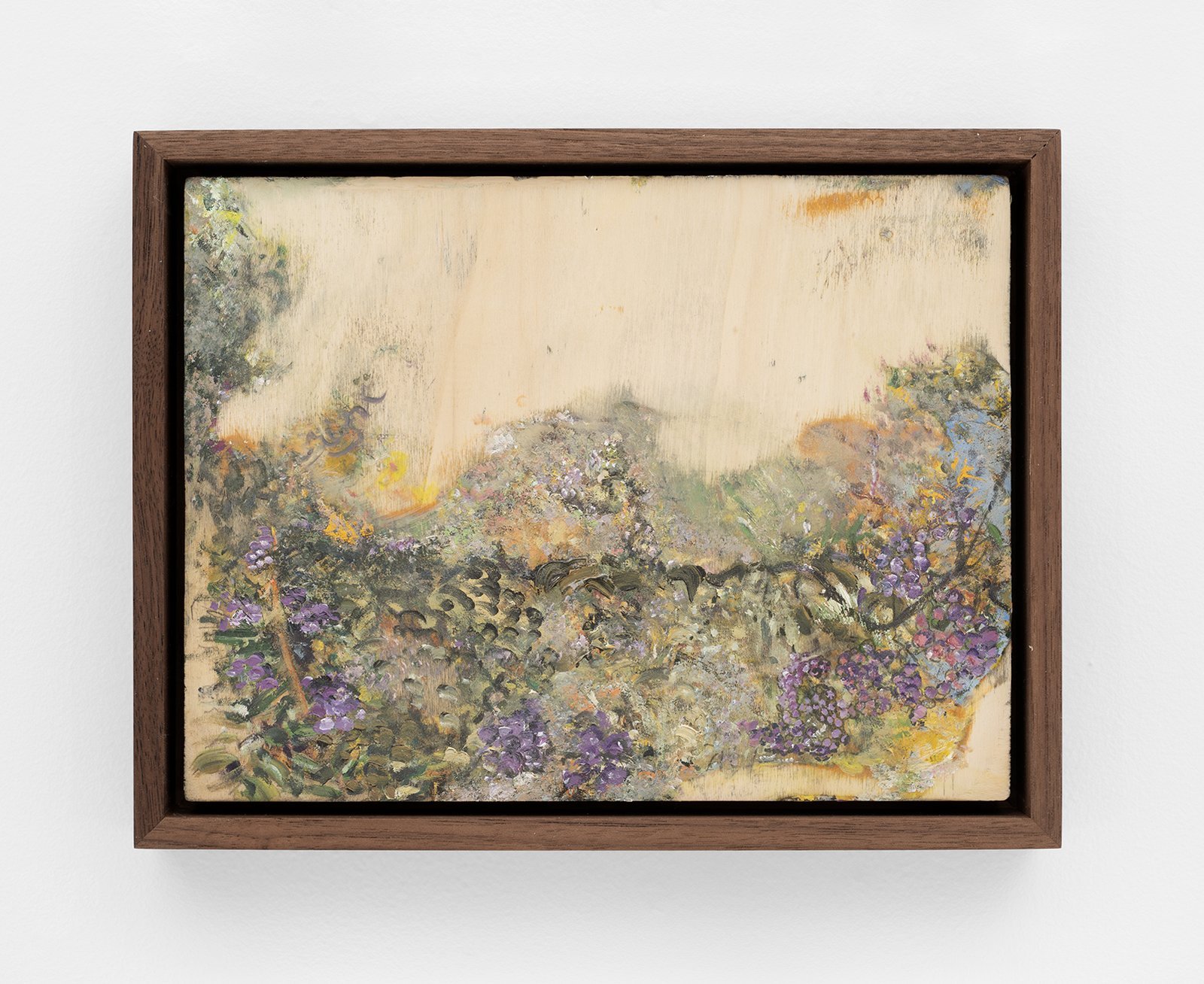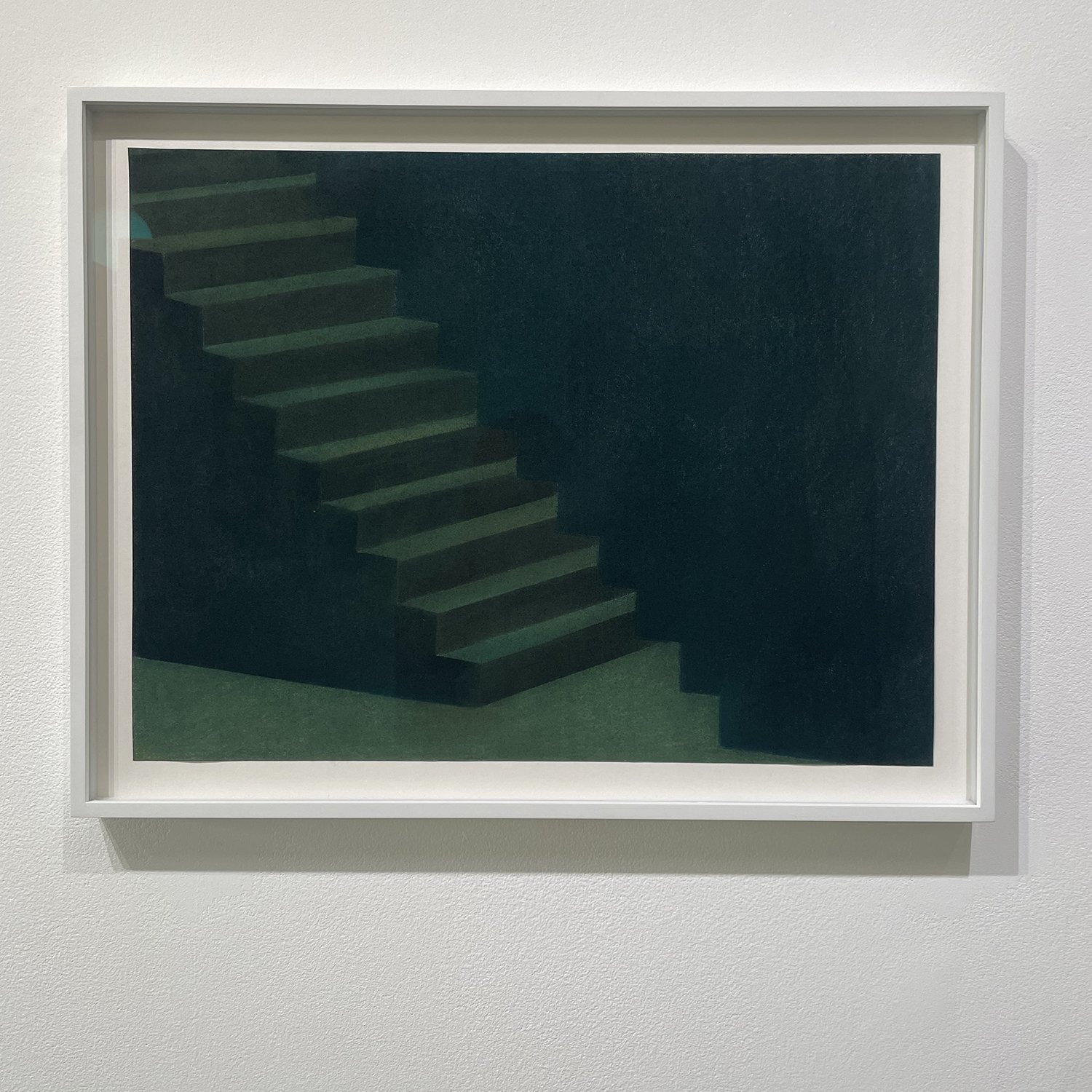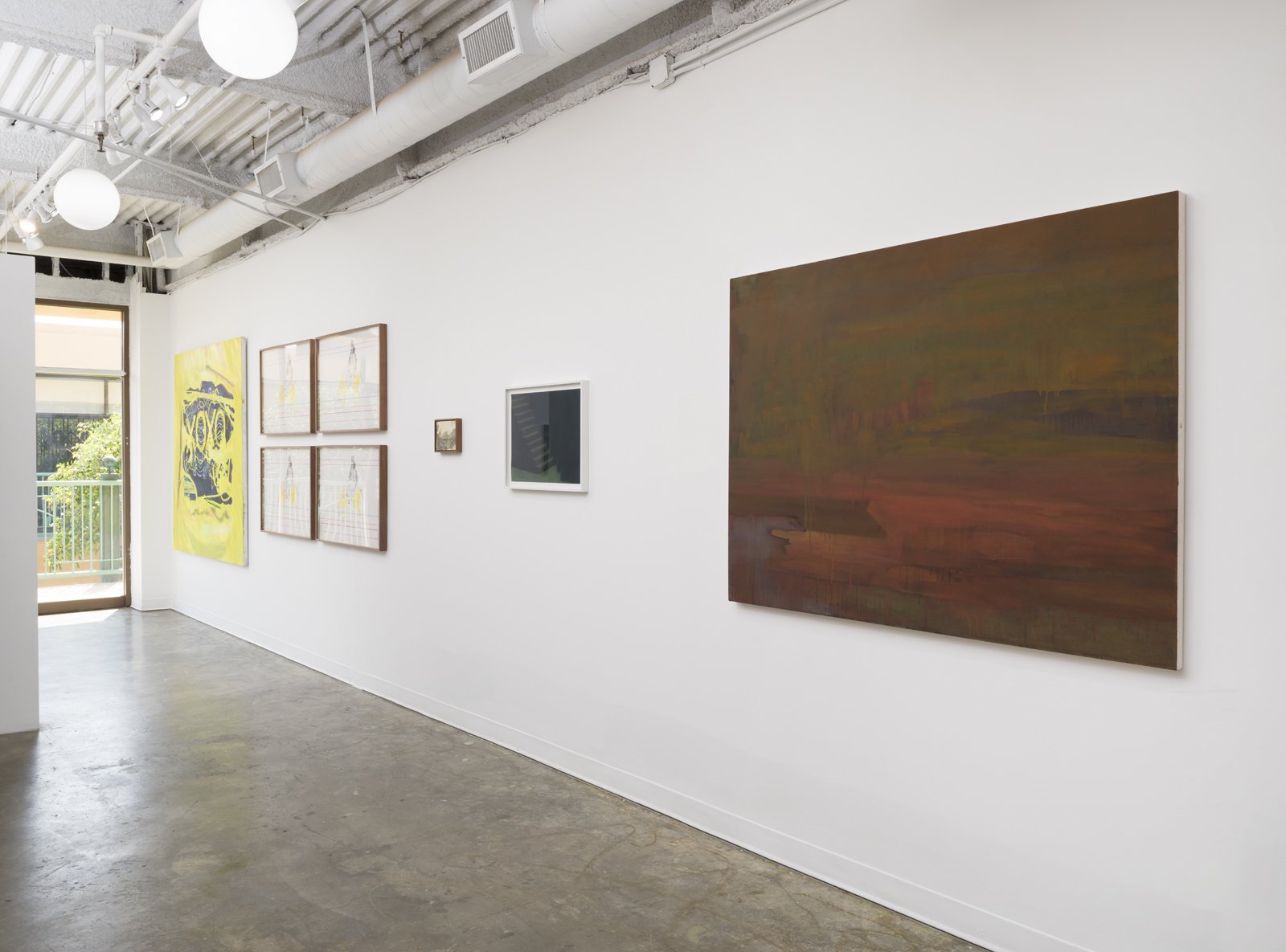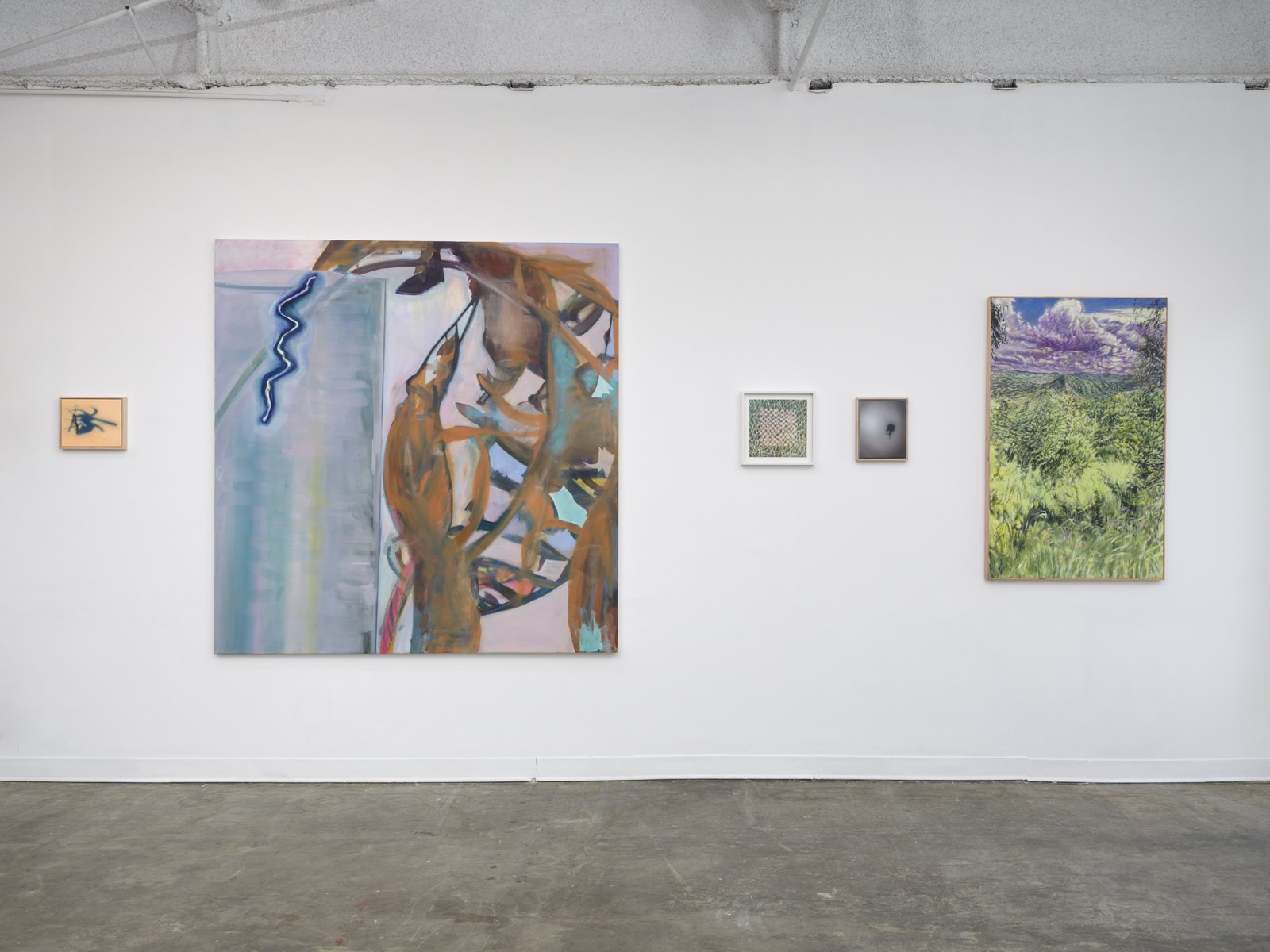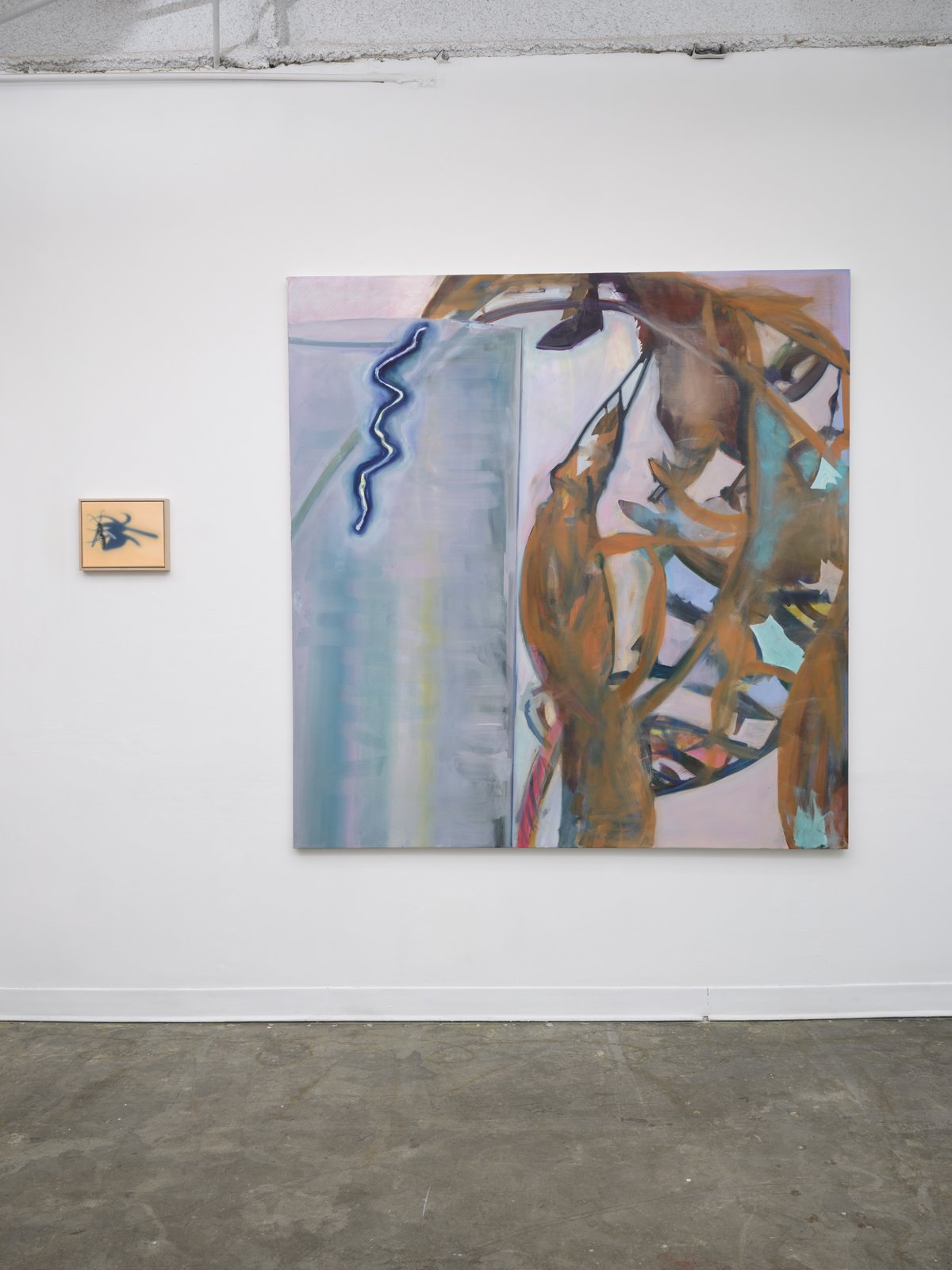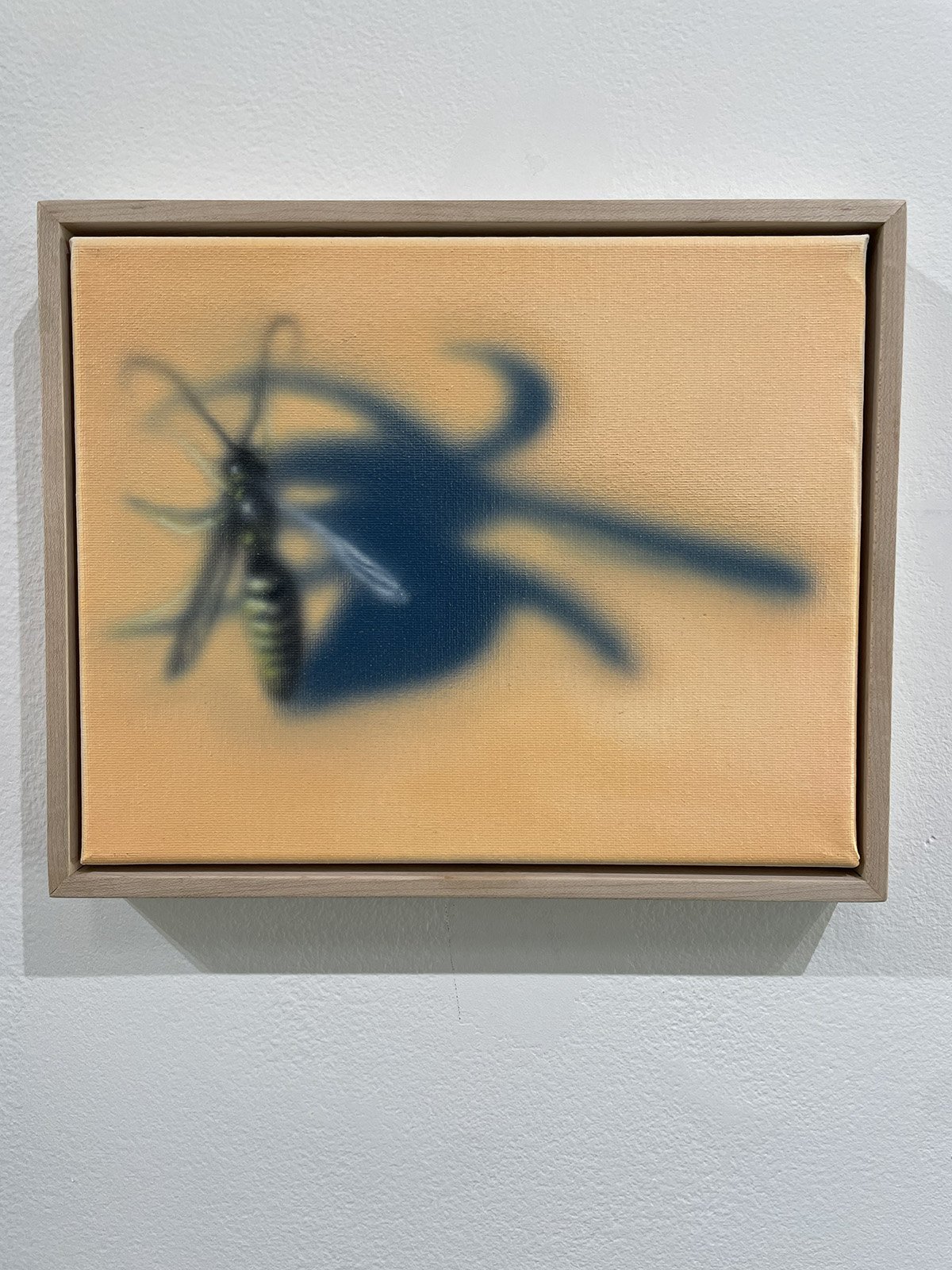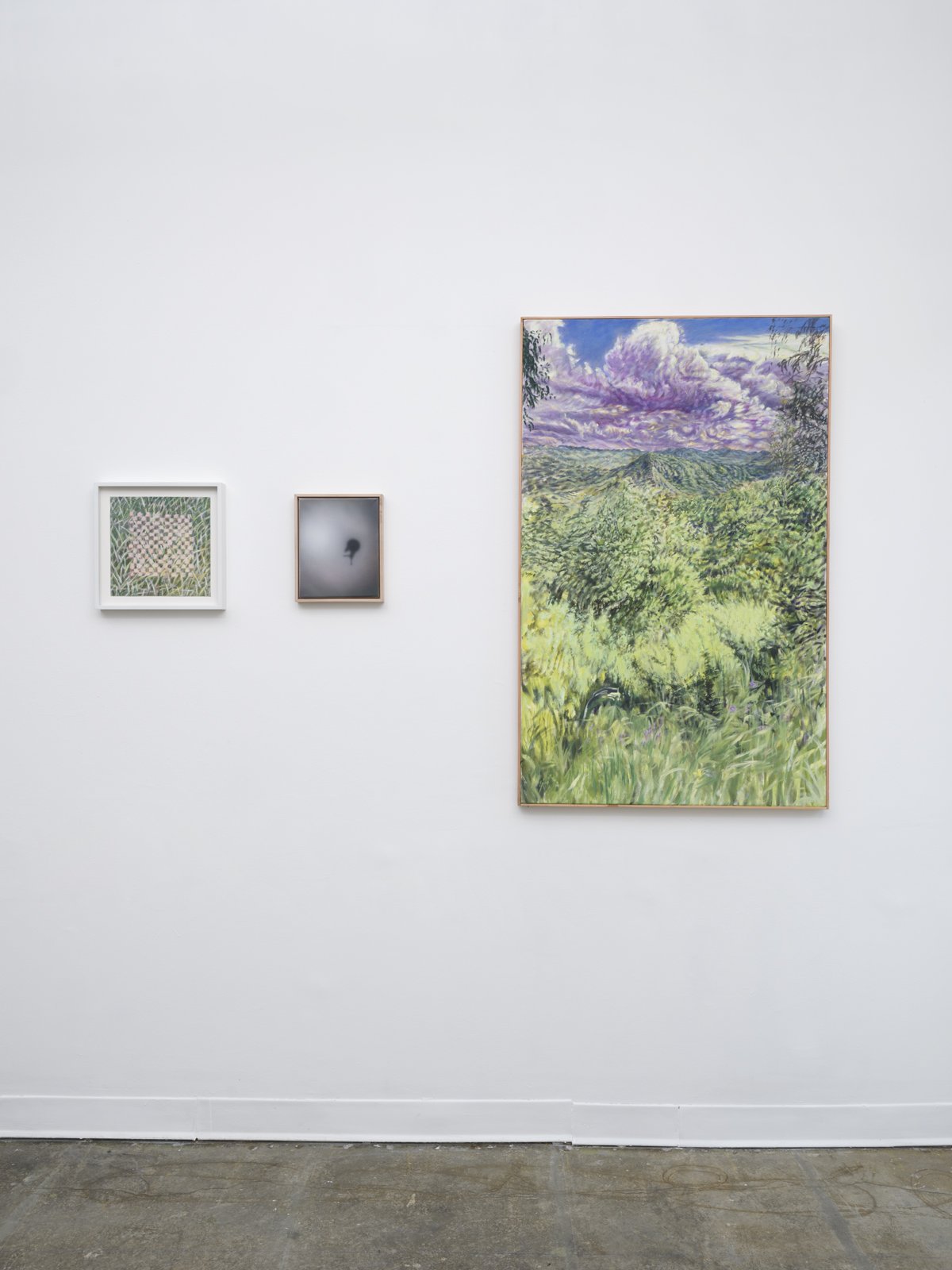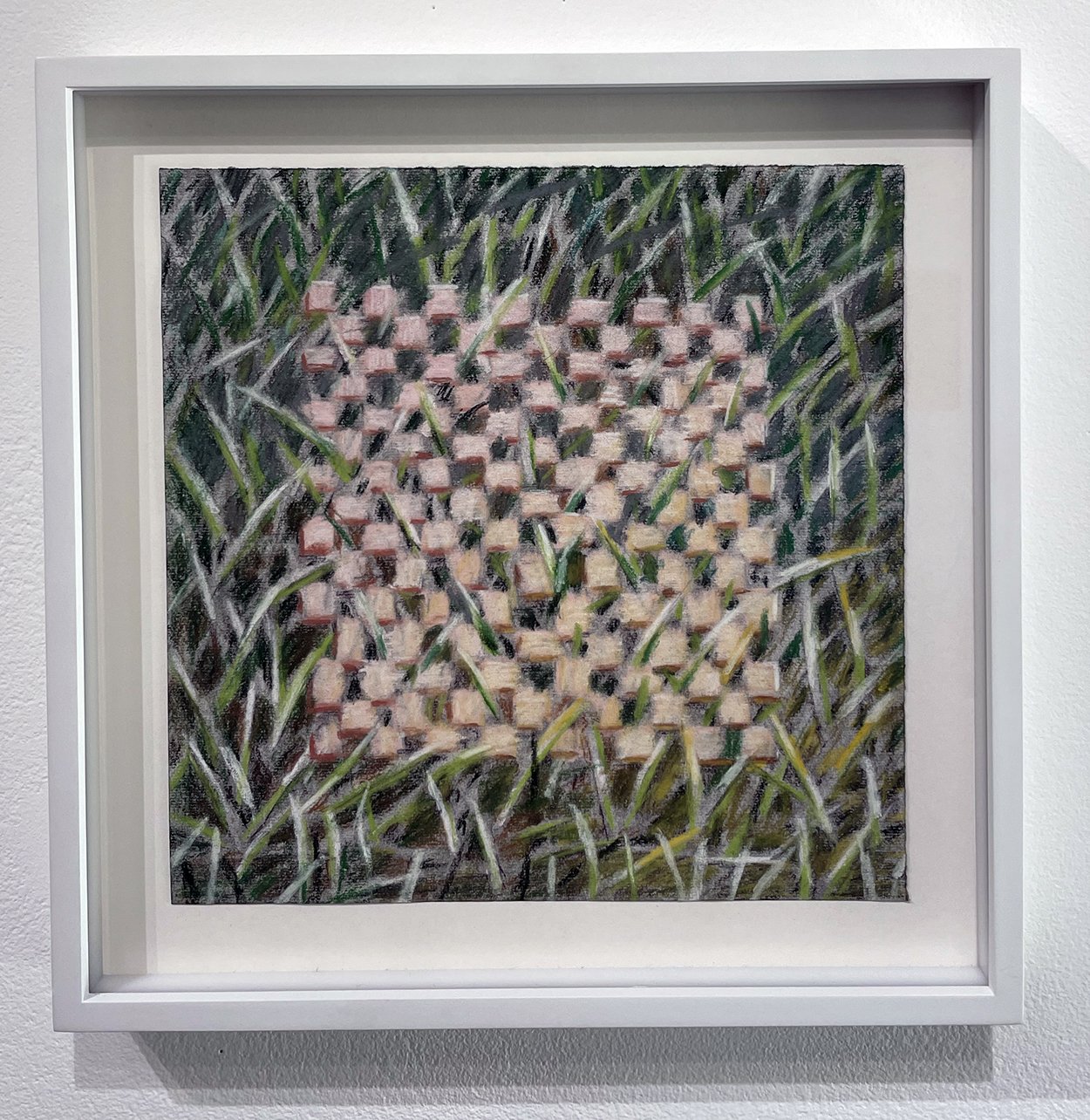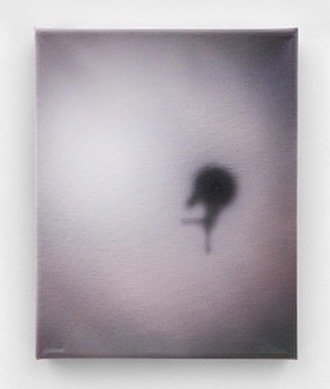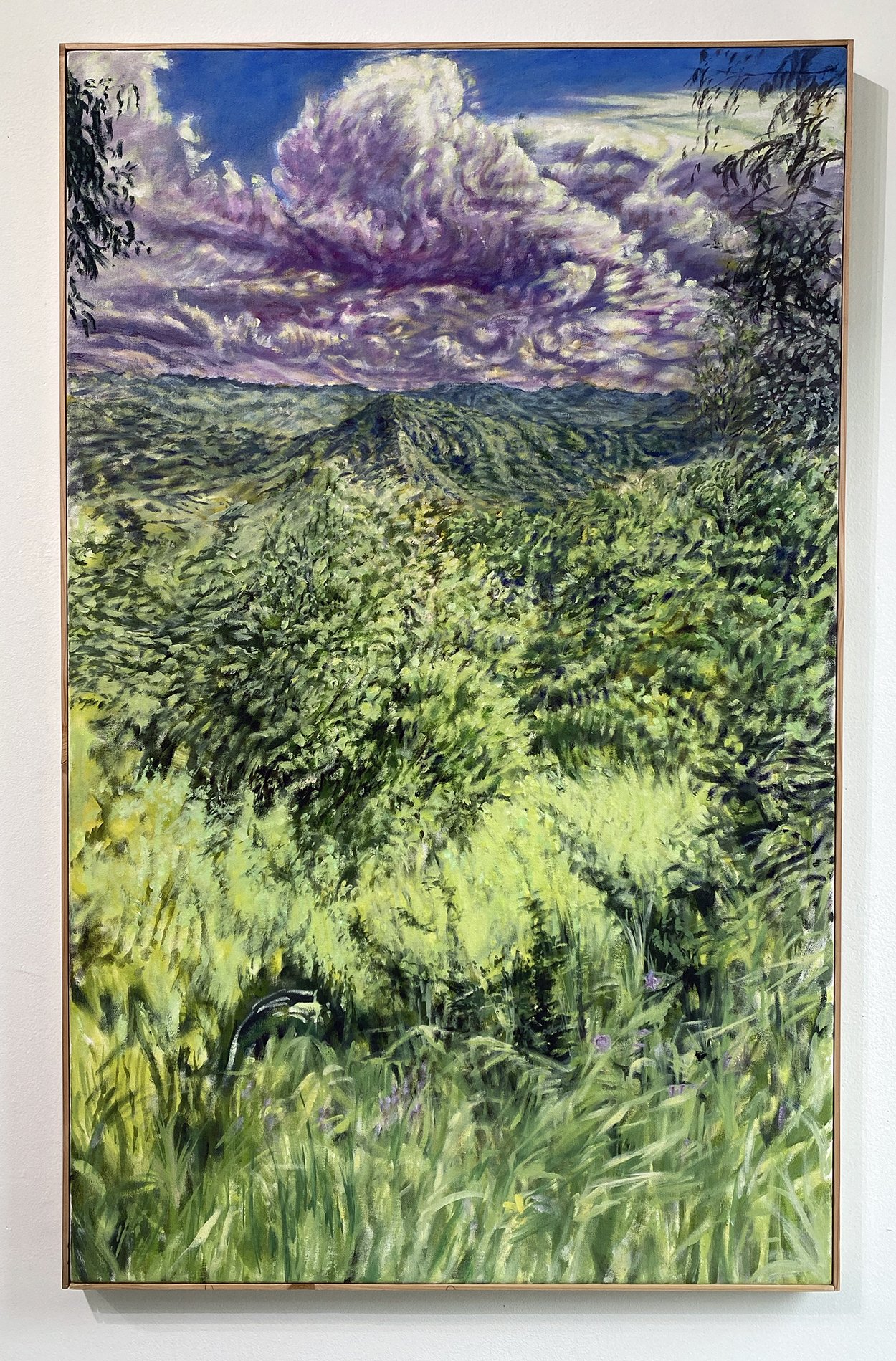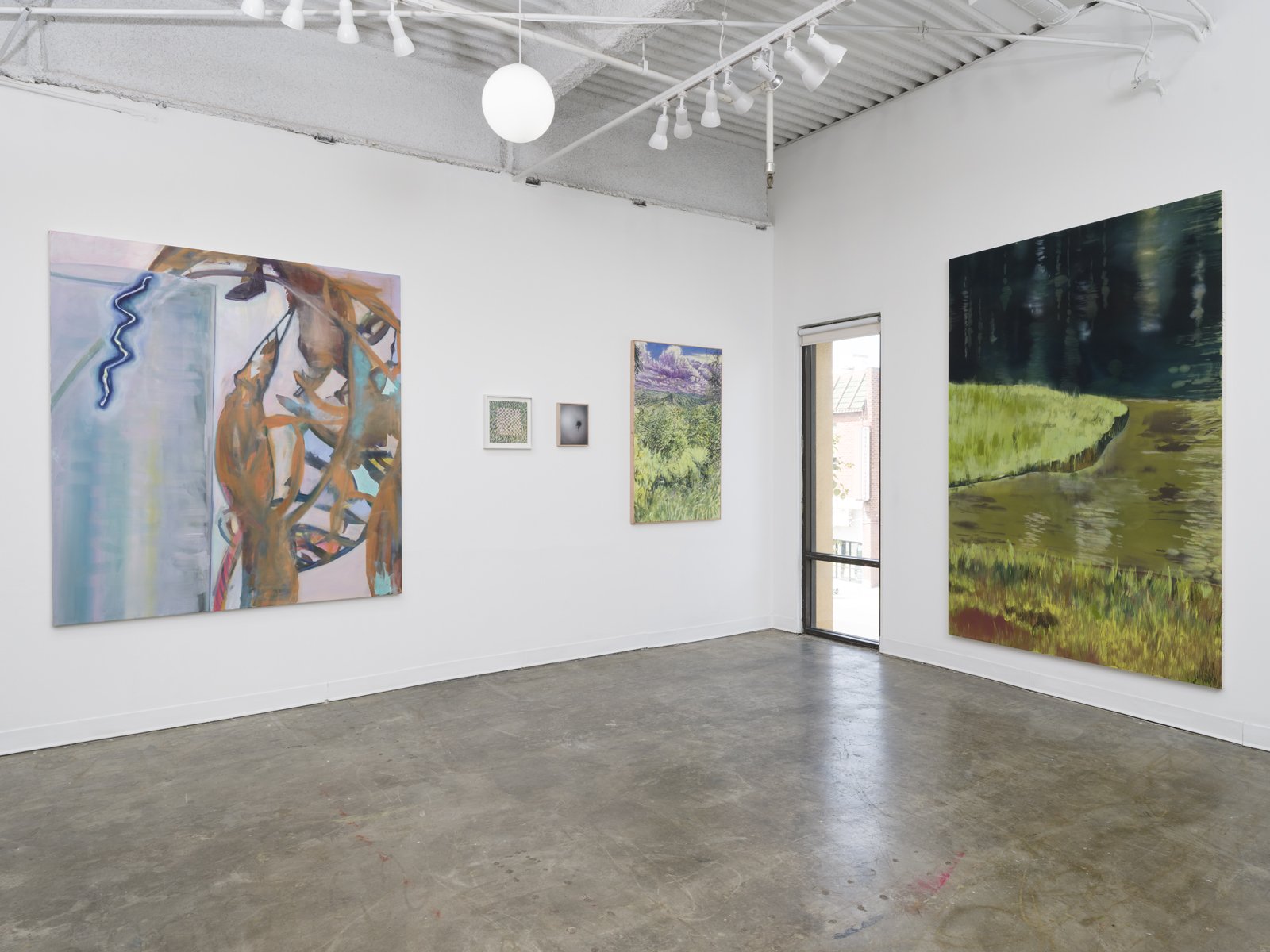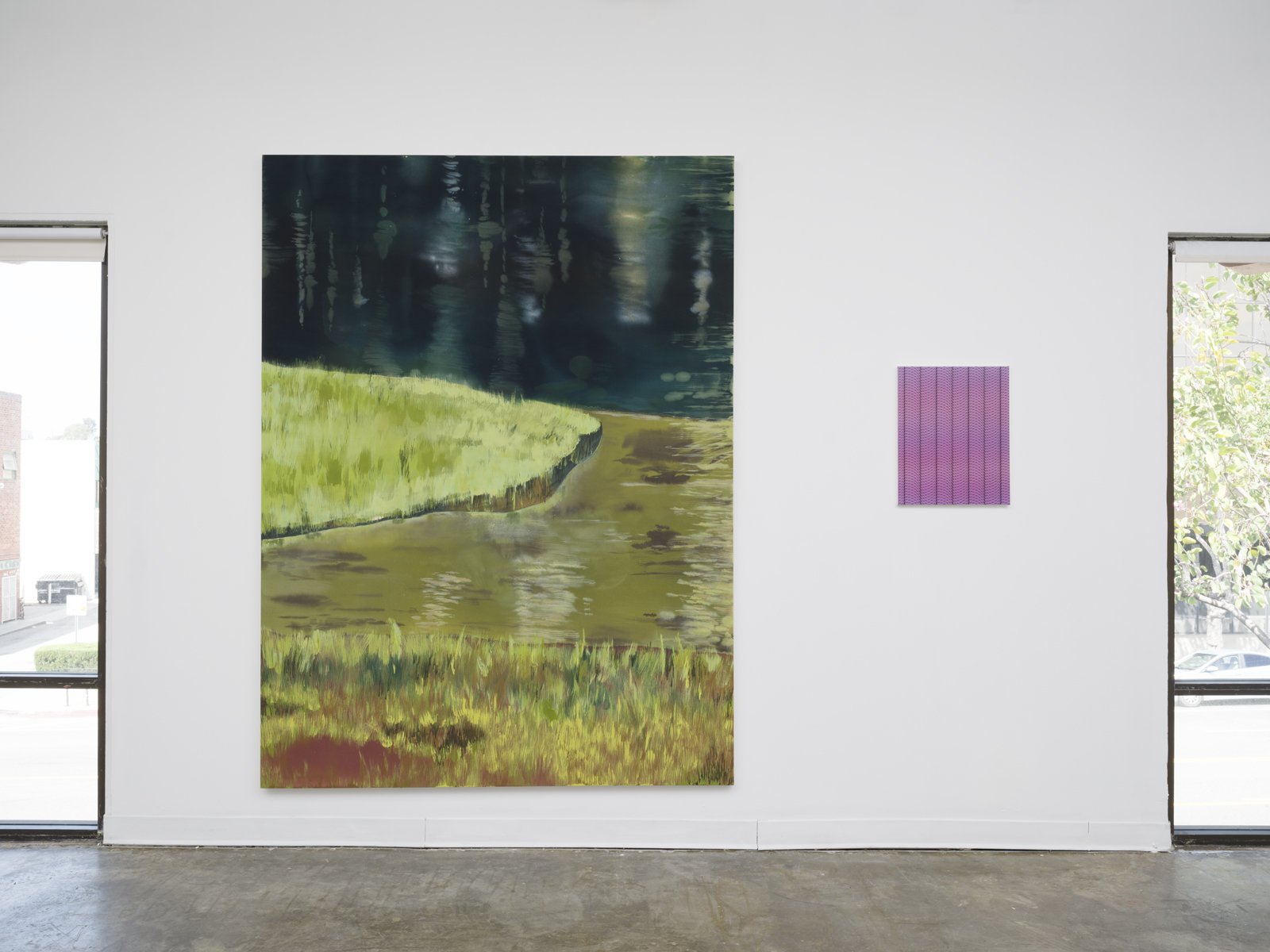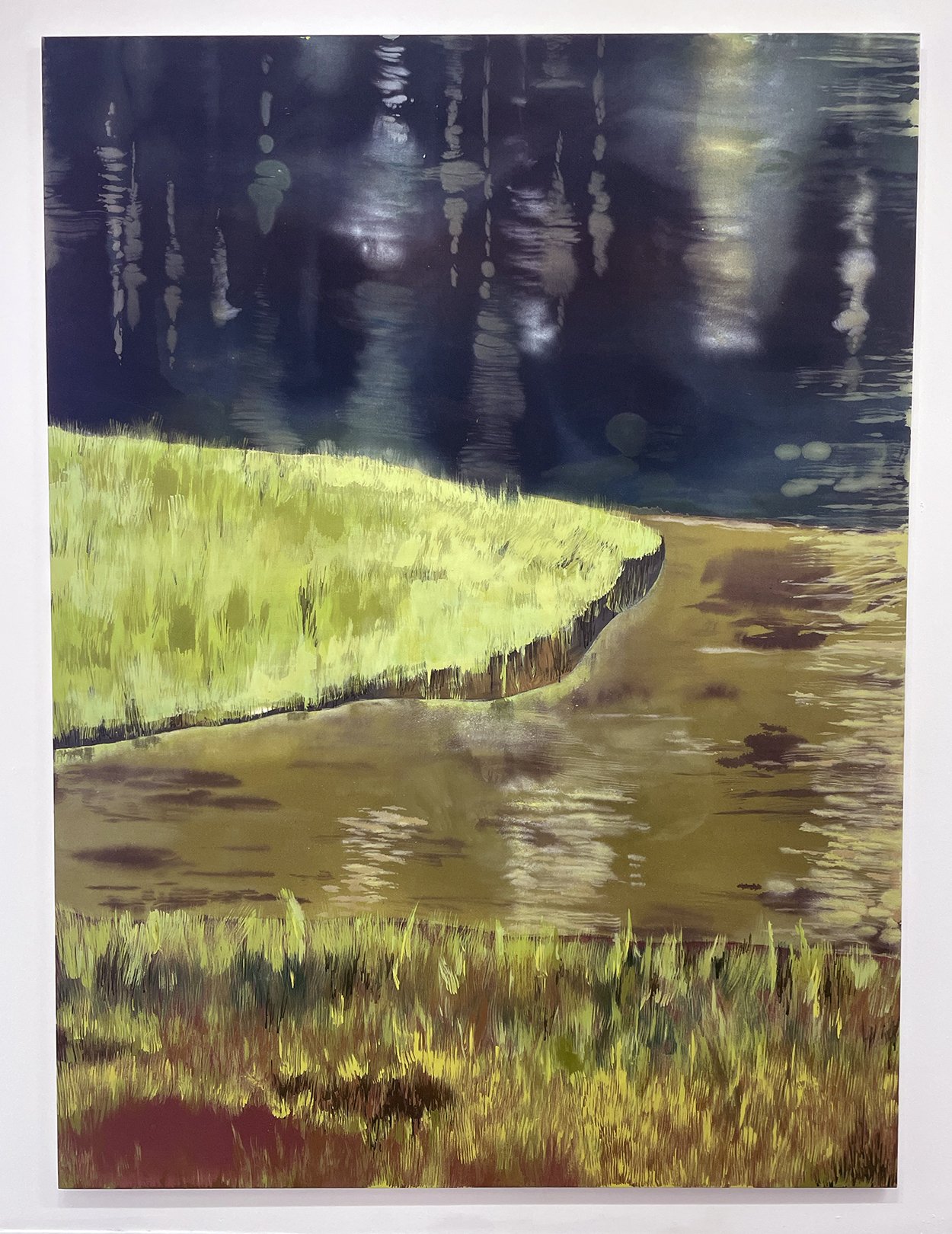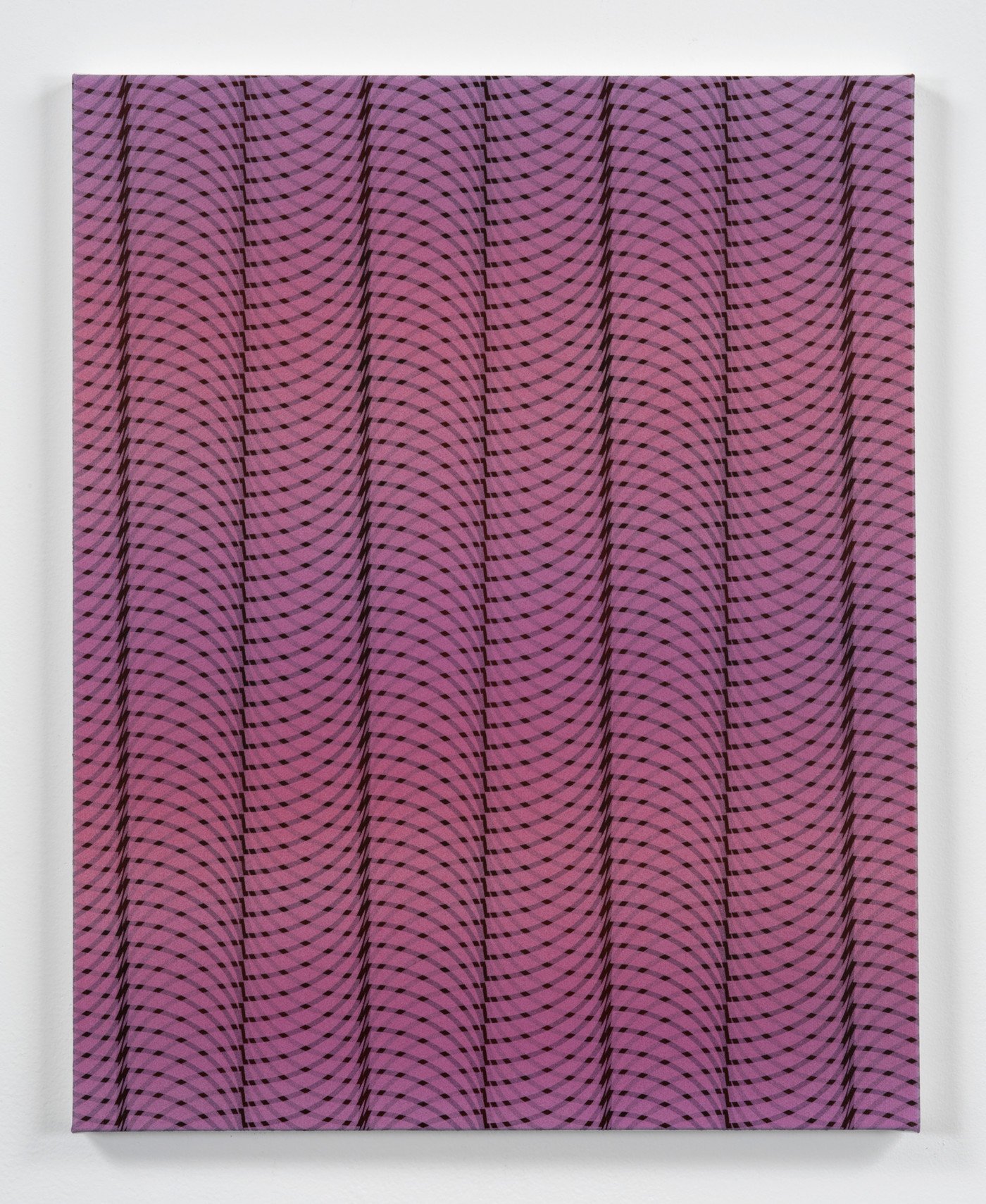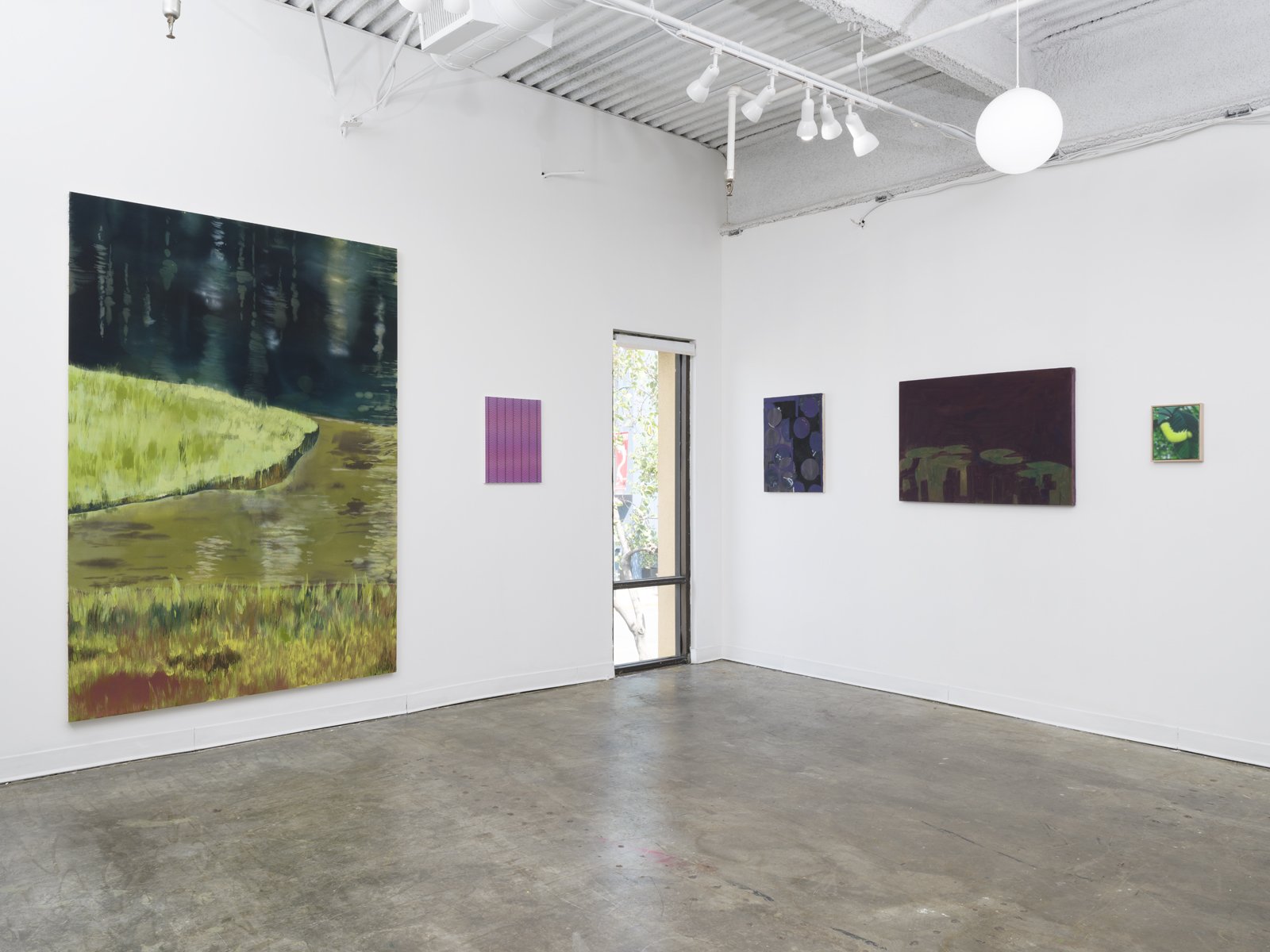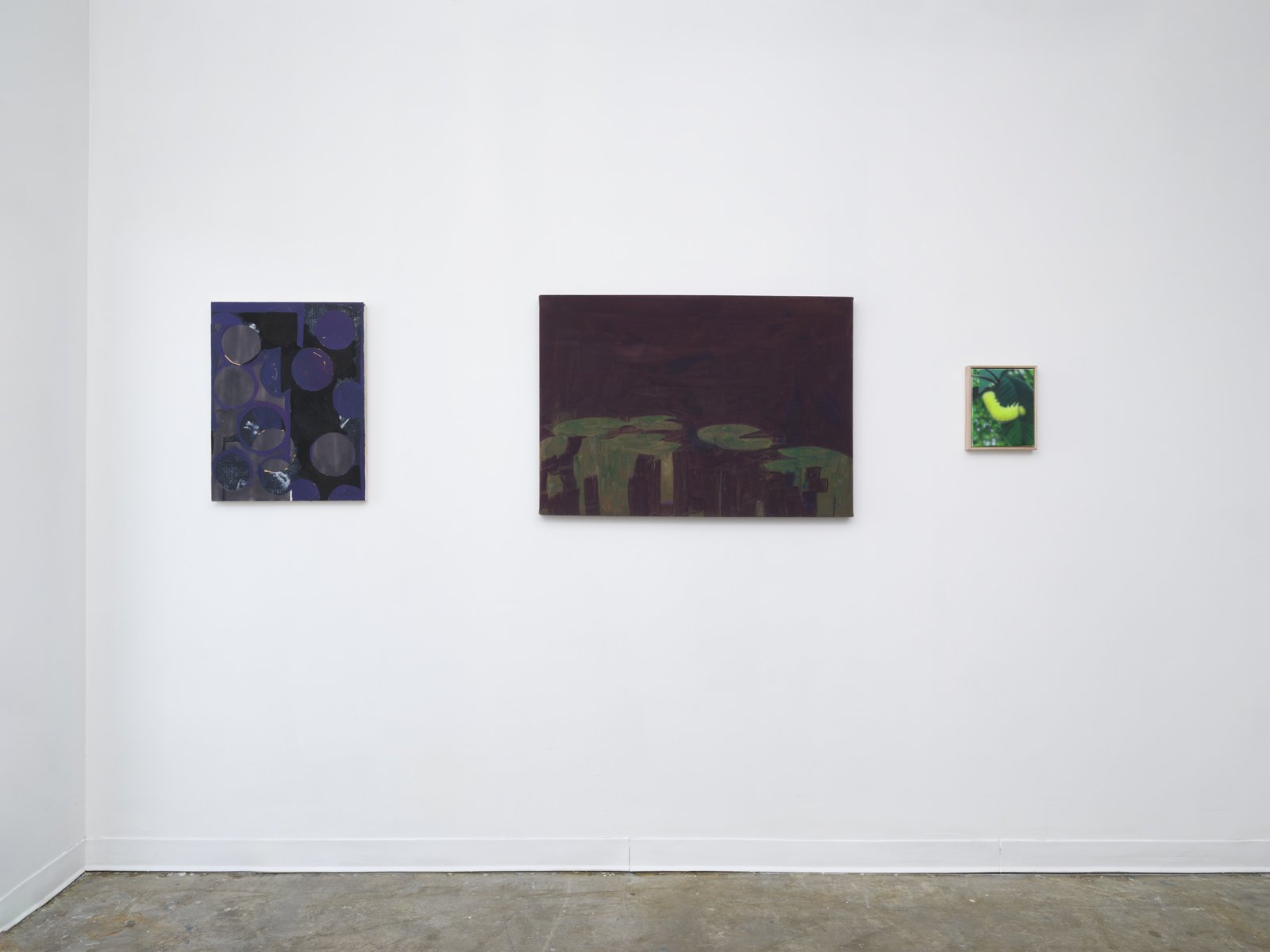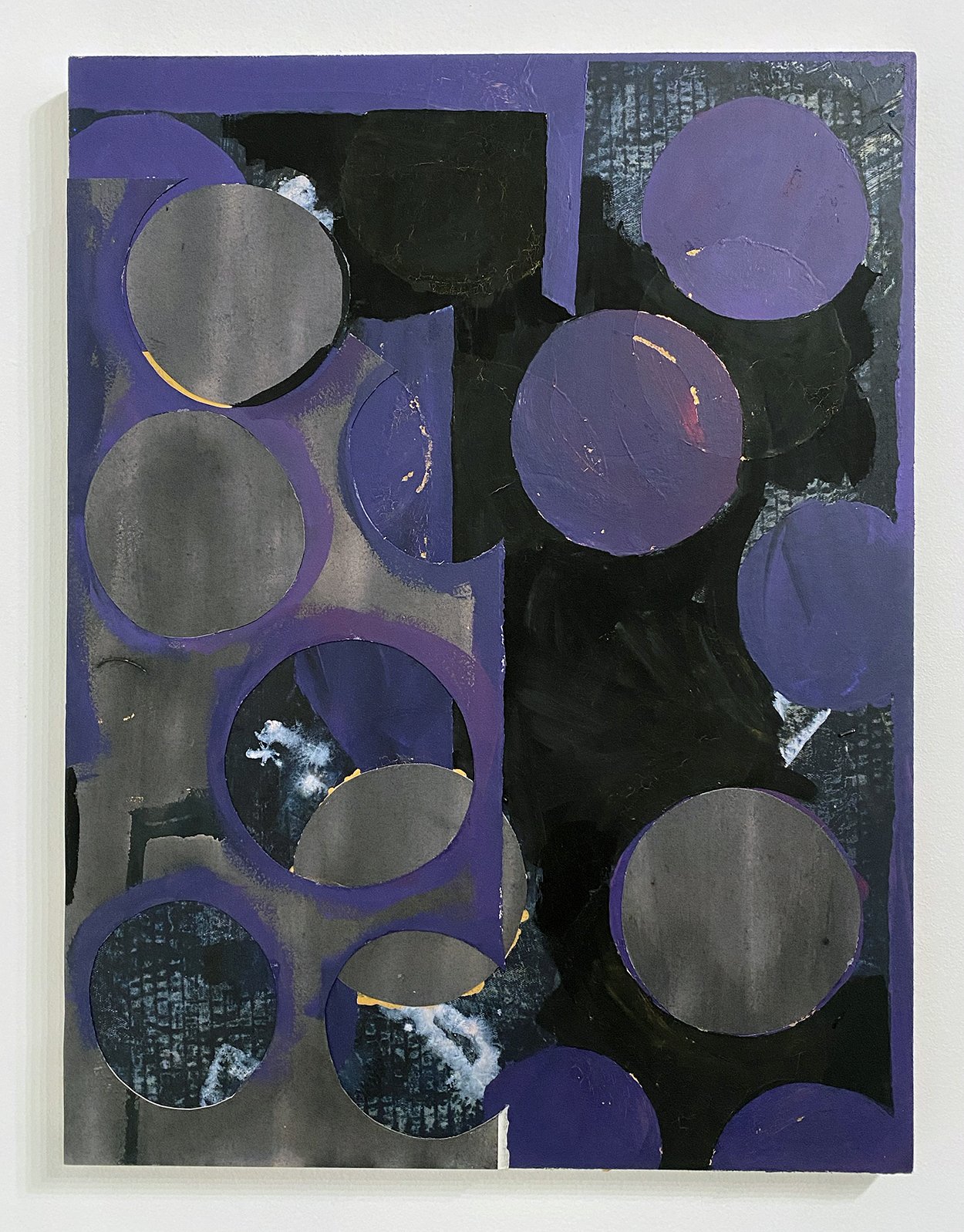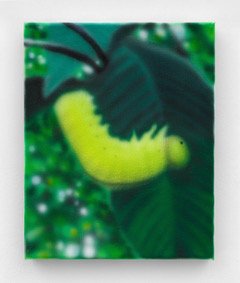The idea of an opening, a space in-between, that both distances and draws close, permeates FOYER-LA’s current project STRANGE SENSATION. Time appears to be altered and distilled in this new terrain. The artists’ processes involve acts of everyday observations from their environment and the natural world. Sometimes the result is mystical and otherworldly. Sometimes the translation reaches a simplification of line, form and color. Much of the work, recognizable as landscapes, or as Chase Wilson’s work is described as “an interrupted type of figuration”, emphasizes the “magic” of the normal world as it presents itself to us.
The work in STRANGE SENSATION explores intuitive constructions of illusionistic space while simultaneously revealing the potential mechanism to suggest a new experience. Lecia Dole-Recio’s work, not quite paintings and not quite collages, constructed from cut paper, cardboard, paint, and tape, sit in an unsettled space. What appears to be foundational material becomes a stenciled surface suggesting a portal into or beneath an additional layered space/surface. Through her continuum process, an interrelationship develops between the works where a literal depth is established, almost like a whisper to the unknowable illusionistic depth implied. Ken D. Resseger’s 6 x 8 inch wood panels feel wildly expansive even in their intimate presence. The landscape-like depictions are not of reality but are also somehow familiar and accessible. Through the handling of light, form and the rendering of detail, a sense of time, as well as place, resides in his fantastical worlds. Ernest A. Bryant III incorporates “augmented drawing in his work that uses line to explore value, labor and displacement.” His composed constructs bring up ideas around authorship, ownership, replication, and uniqueness. Bryant discloses, "I am interested in the phenomena of the world and trying to make sense of it aesthetically and culturally... (insert what you wish I said here).”
Several of the artists in the project turn toward nature and hold it with utter reverence. Geoff Seelinger observes the natural surroundings of his Topanga home “with painting to explore undiscovered inner territories, cognitive associations and order amid organic chaos.” He reflects on perceived histories of growth and offenses- both natural and human occurrences. Andrea Welton’s paintings are made in response to the lived experience of the body in nature. She incorporates foraged natural materials from excursions in her paintings, calling attention to the fragility of these depicted extraordinary landscapes. Catherine Fairbanks, an artist and a critical care nurse, approaches her roles as two diverse but equal forms of commitment. Her dreamy ethereal landscapes pulse in and out of formation through her layered chalky colors and shifting horizons. Fairbanks shares about her work: “The idea that we are acting along trajectories shaped by humans of many other eras is certainly at the core of my work as both an artist and a nurse.” Sam Cockrell ritually documents his interface with the natural world- usually an animal- often initially with photographic means which he later translates in airbrush. This soft blur-like quality distorts the viewer’s placement within the space. Cockrell’s paintings are small and personable with the date of each interaction, establishing that the exchange is up close- possibly ours as well- yet his attention to color and atmospheric space make the experience feel dream-like, otherworldly. Cockrell expresses, “I discovered in nature the non-utilitarian delights that I sought in art. Both were a form of magic, both were a game of intricate enchantment and deception.”
Several of the artists take everyday- possibly mundane- surroundings and challenge how signs and representation express meaning. The space within the painting is a type of indeterminate territory. Gravity and perspective are often distorted. Form supersedes the representation of function in a dialogue to understand significance. In Chase Wilson’s paintings, a recognizable object floats within a fragile inertia. Depicted space is flattened, torqued, and seemingly disorienting while imbued with saturated color and optical mirroring. Dana Lok, like Chase Wilson, uses a counter-intuitive vantage point in her work while often exploring how time takes up space. Lok describes the tangibility of time as “things with thickness, texture and weight, like moments you could touch or eat.” Lok and Cameron Martin, are interested in the relationship between perception and sensory systems while being grounded in the physical world. Martin’s work, natural environments appropriated, feature overlapping geometric forms in varying transparencies setting up patterns and challenging our familiarization with illusionistic depth. Martin develops internal spatial relations in vivid colors on a seemingly mechanical surface. Peculiar atmospheres start to evolve and extend as Martin’s work weaves through the language of abstraction and digital interfaces.
The work in STRANGE SENSATION exemplifies the presence of a phenomenal ambience where there exists the complexity of expansion and containment. Dana Lok captures this intricacy: “My sense that nature is arranged into levels must trace to the idea that the way big, complex things look depends on the way small, simple things behave. Dependence looks a bit like one thing sitting on top of another.”
